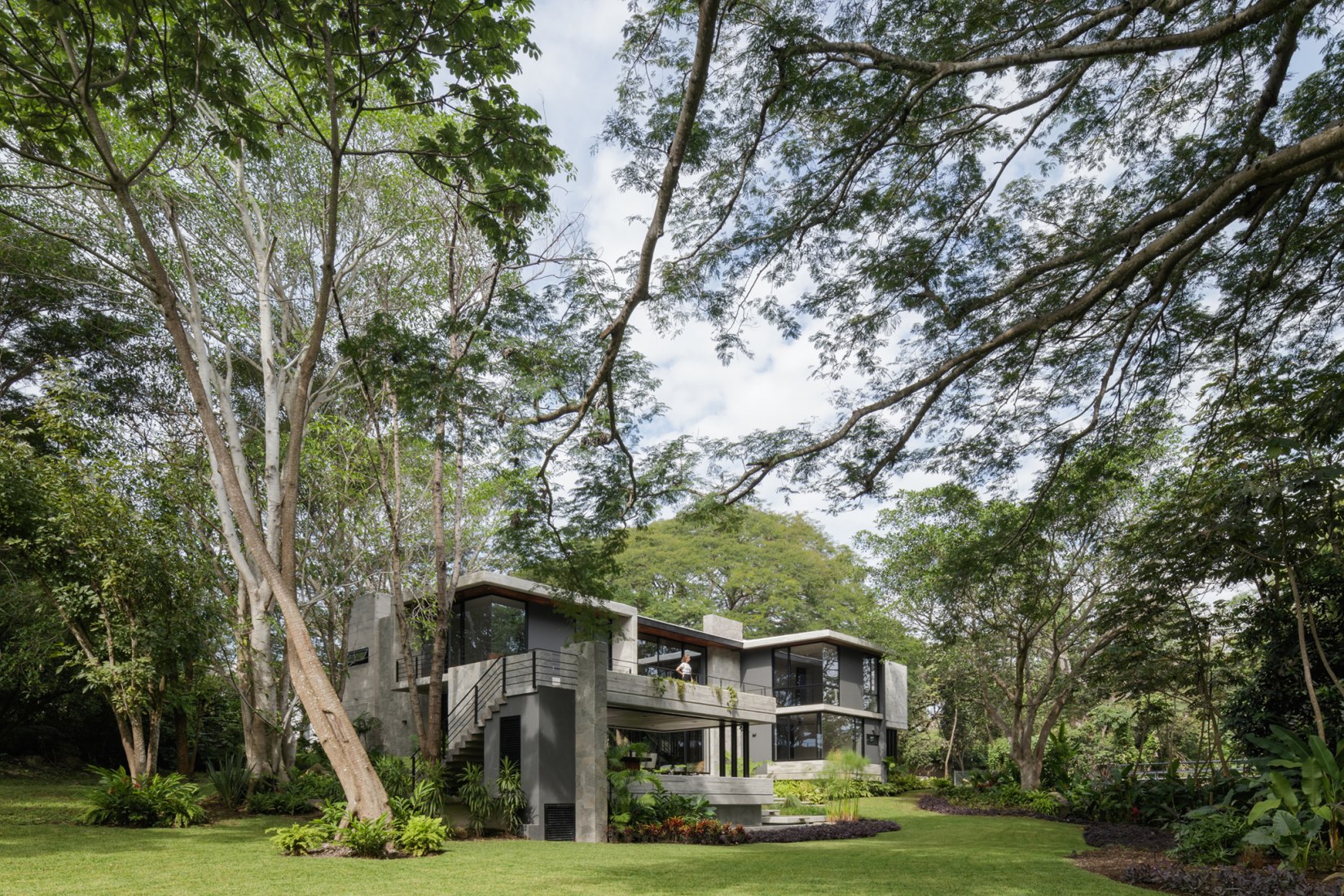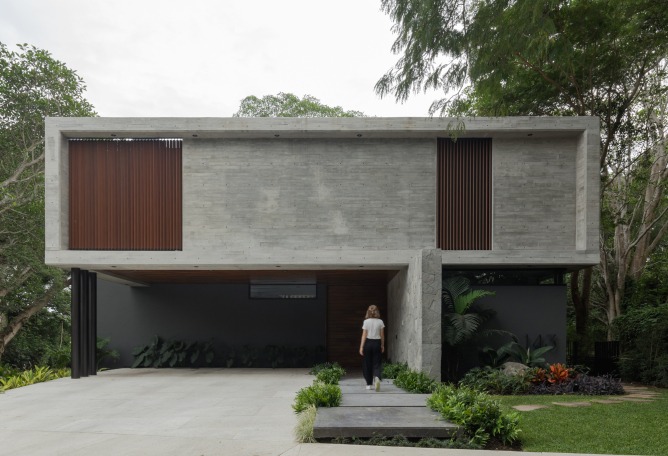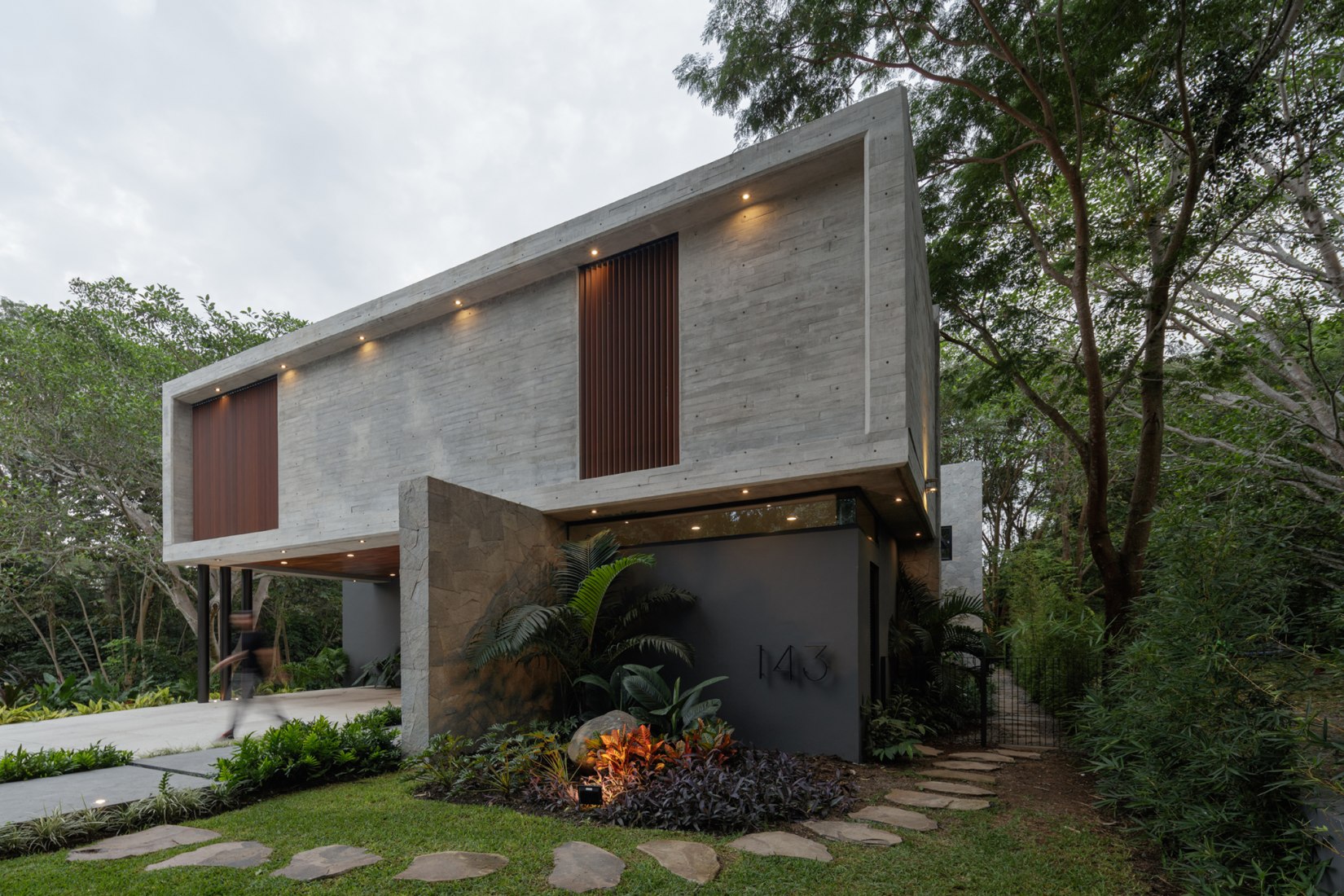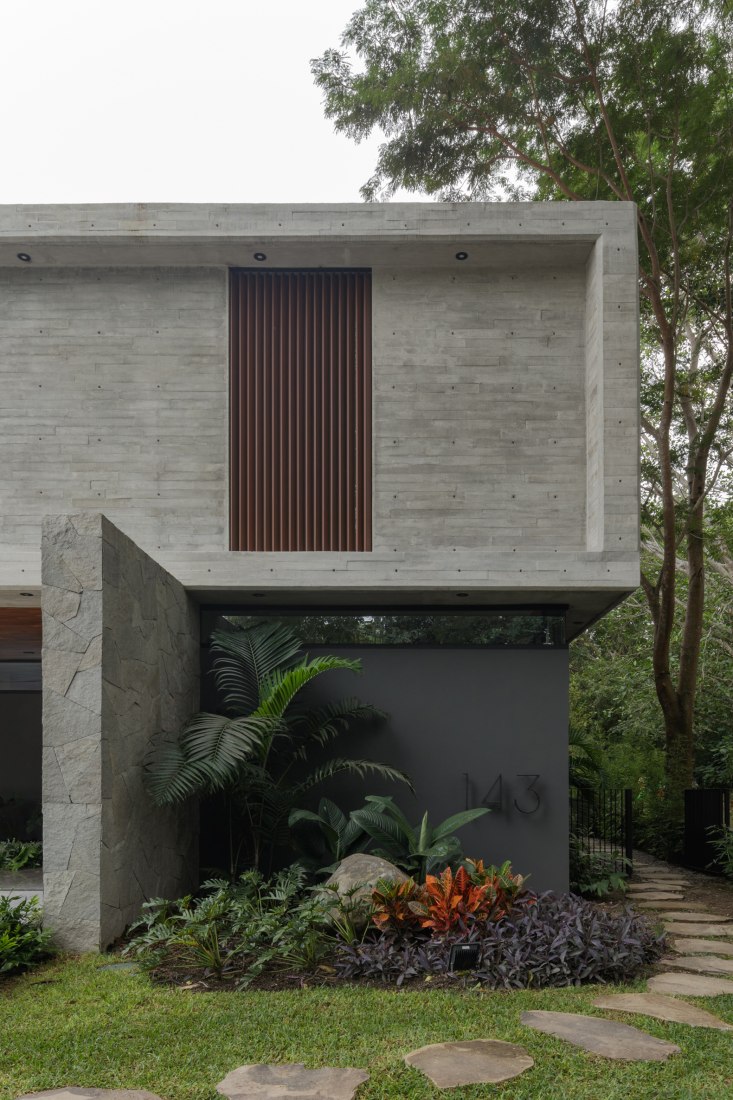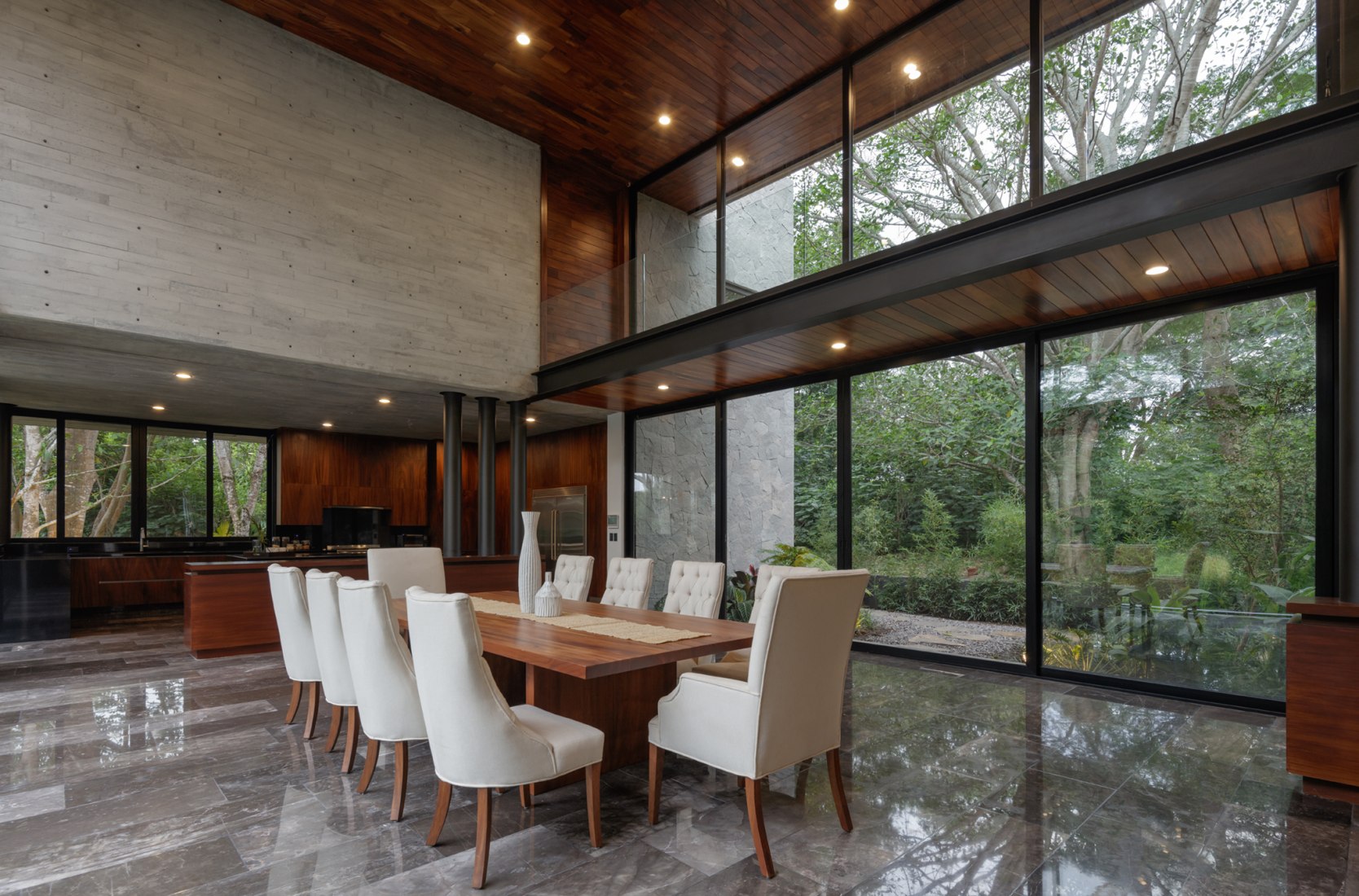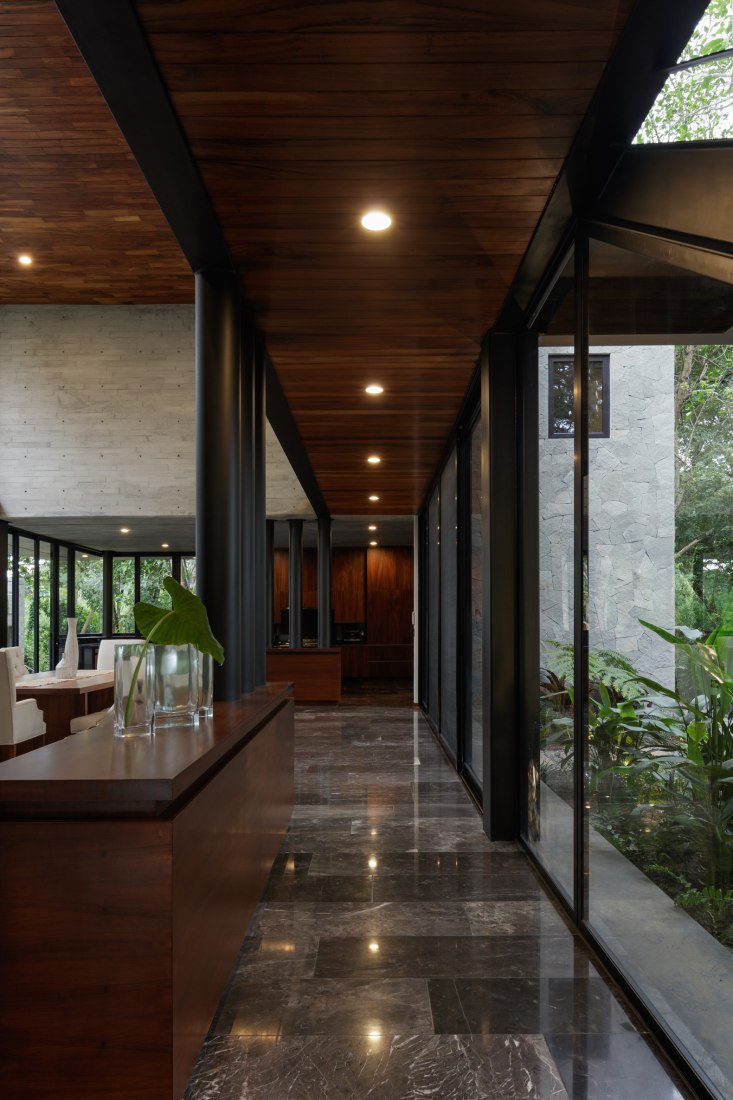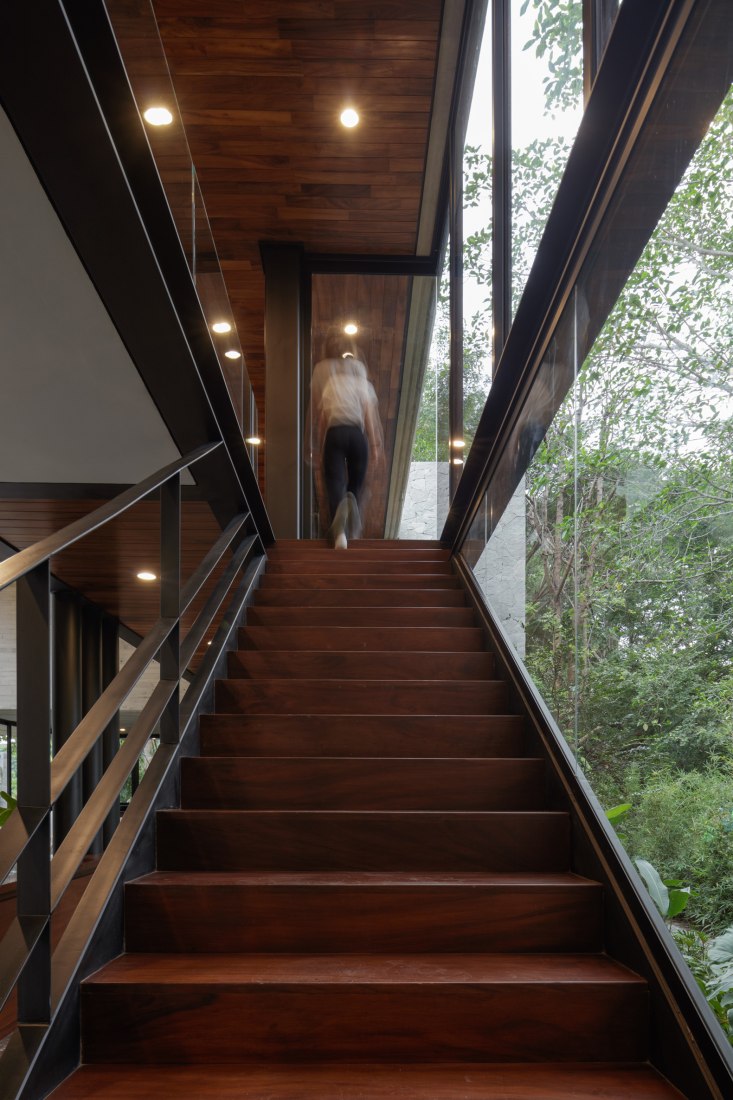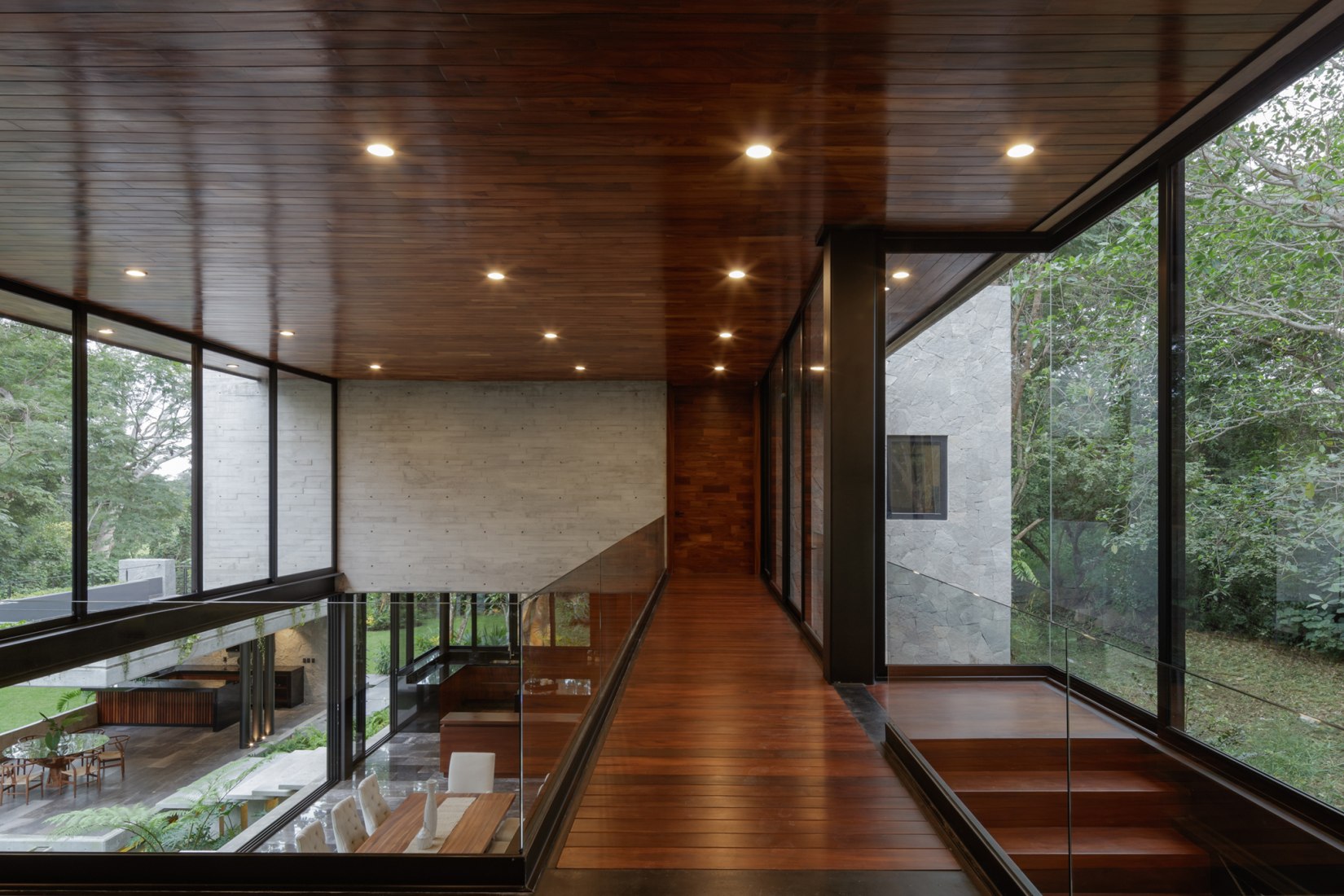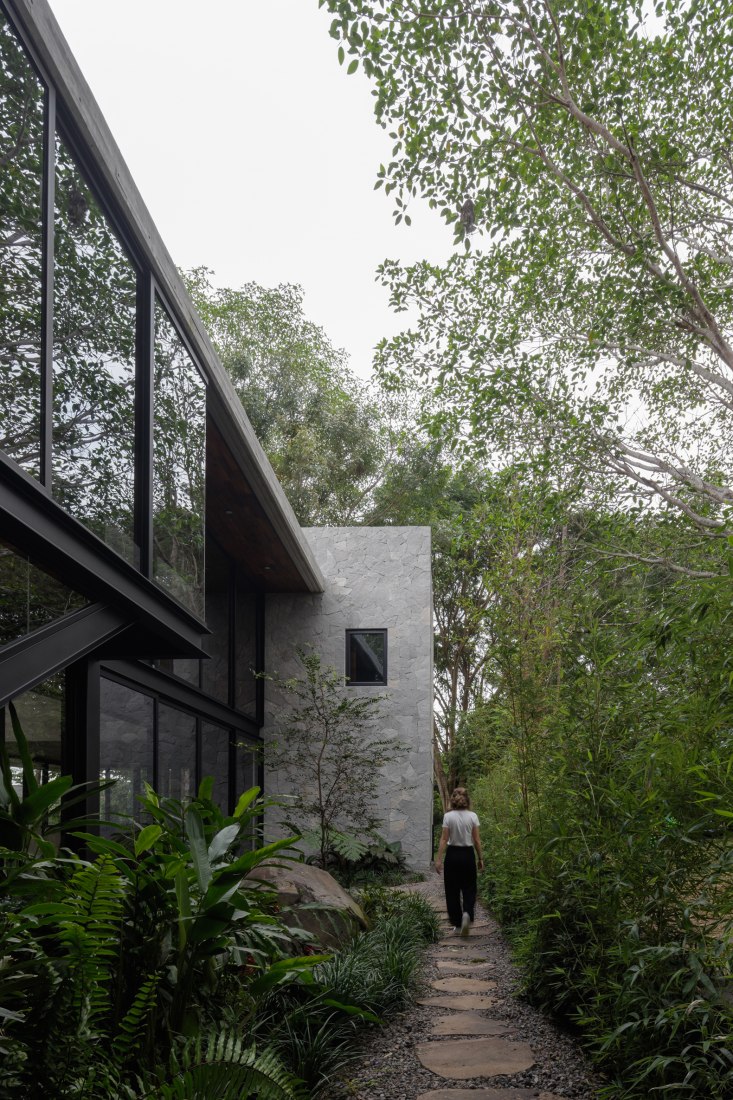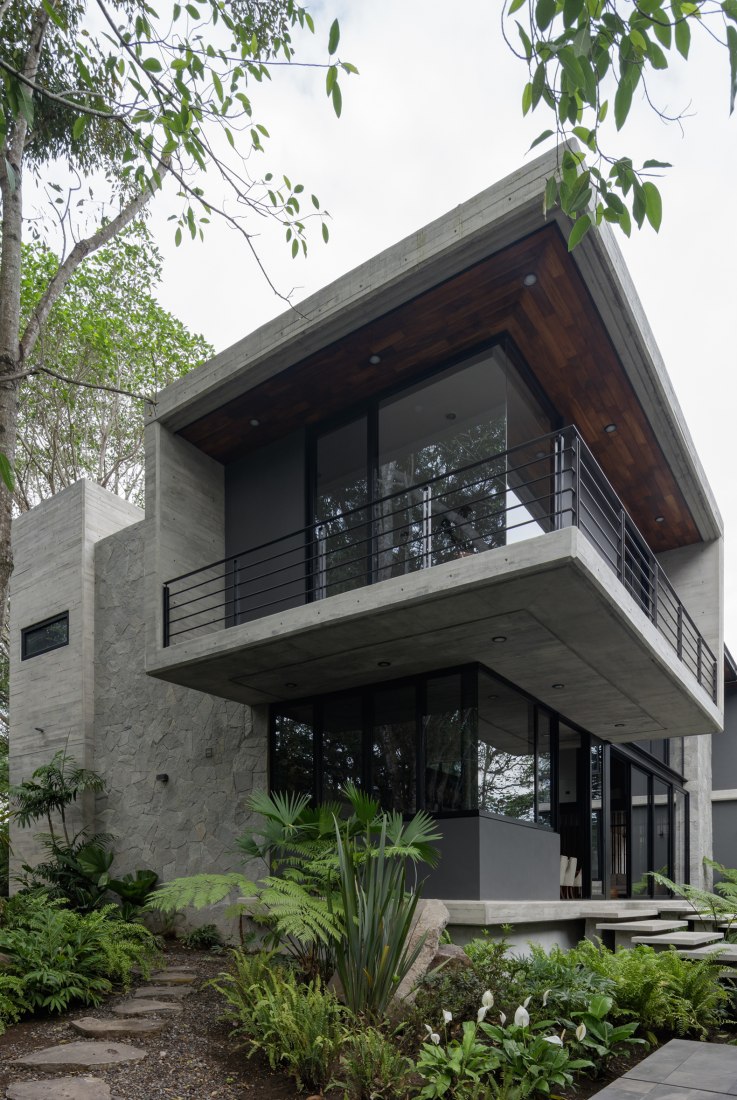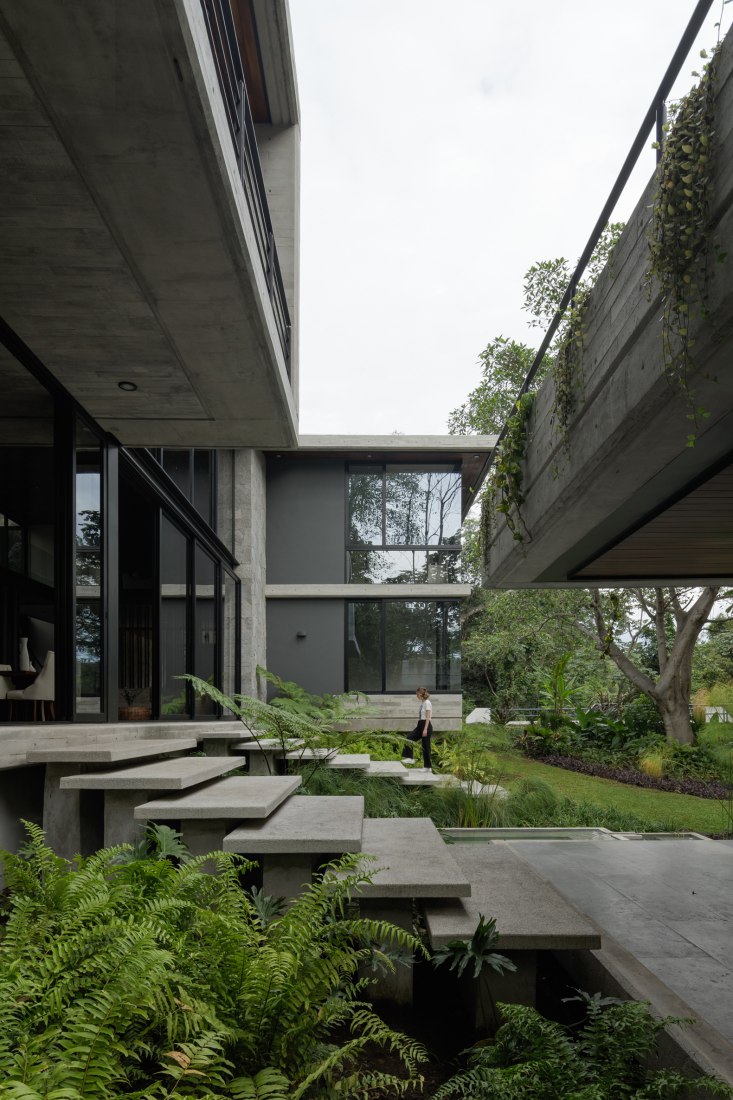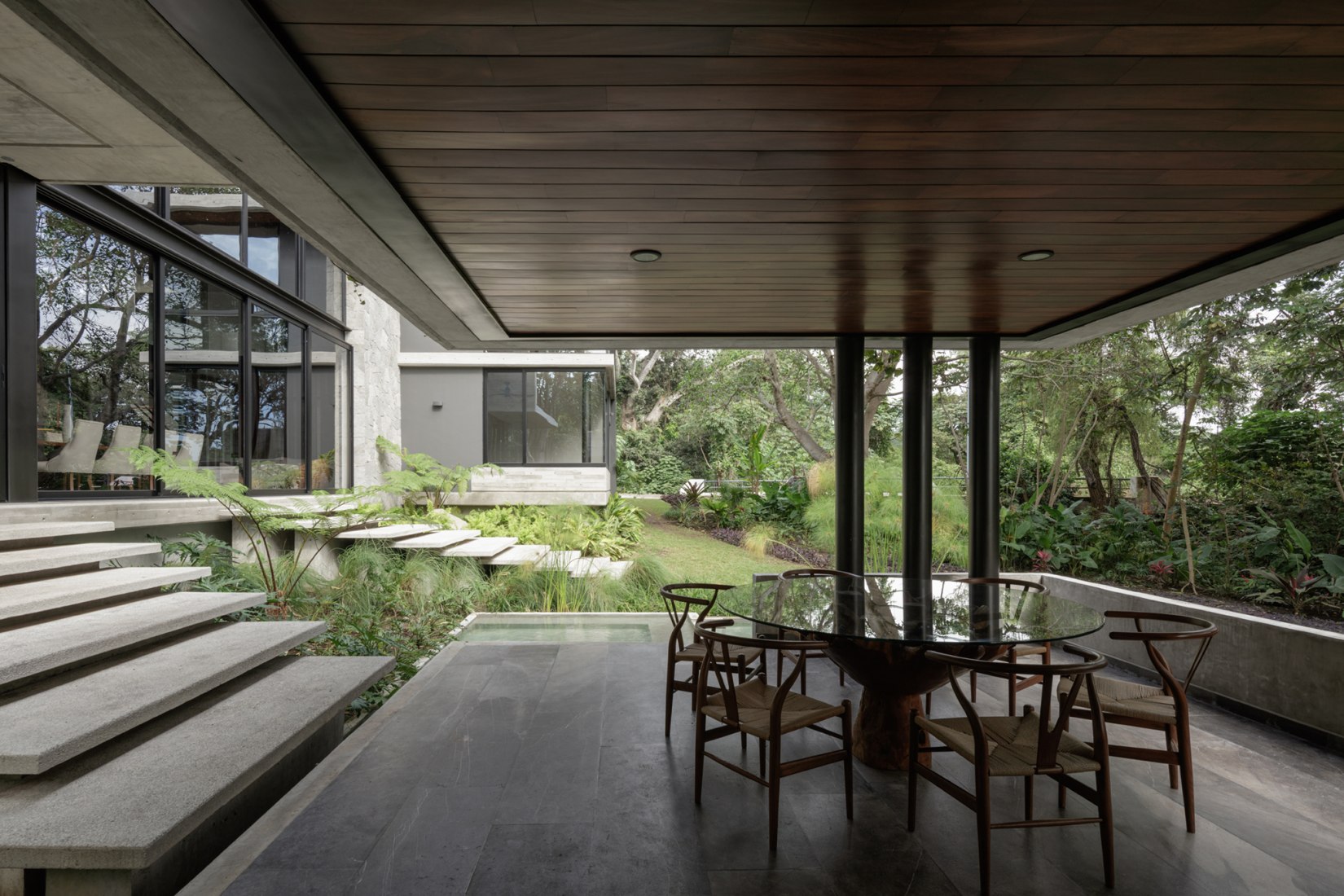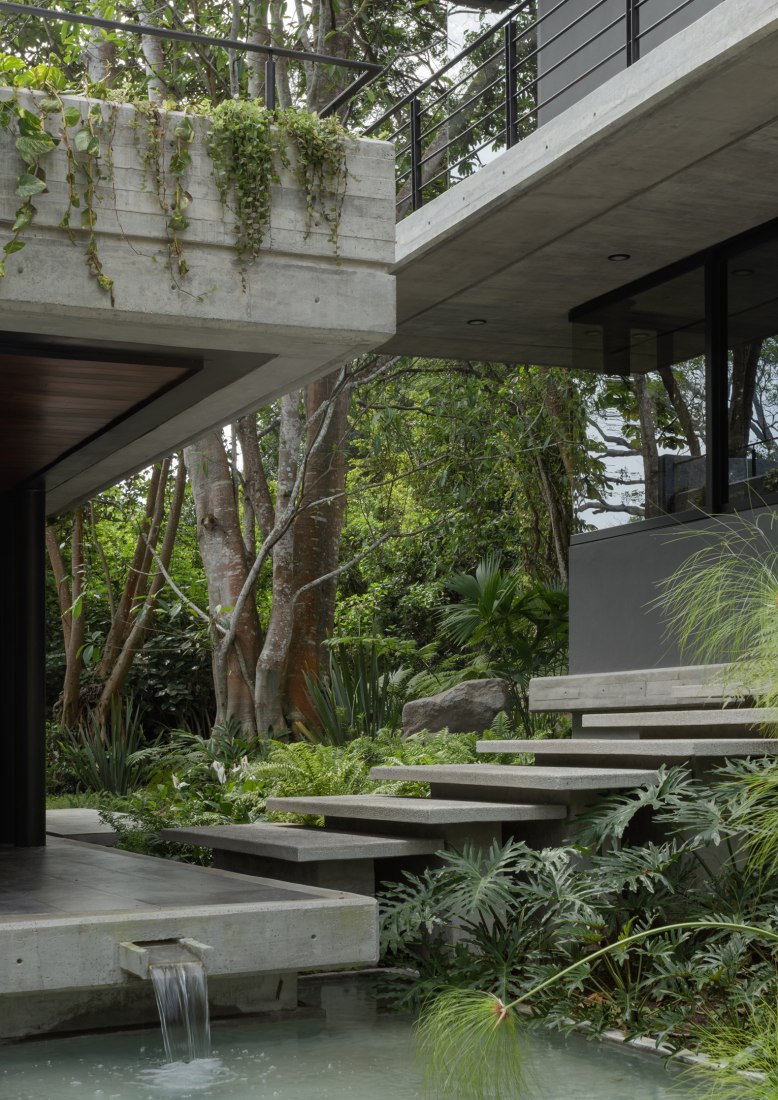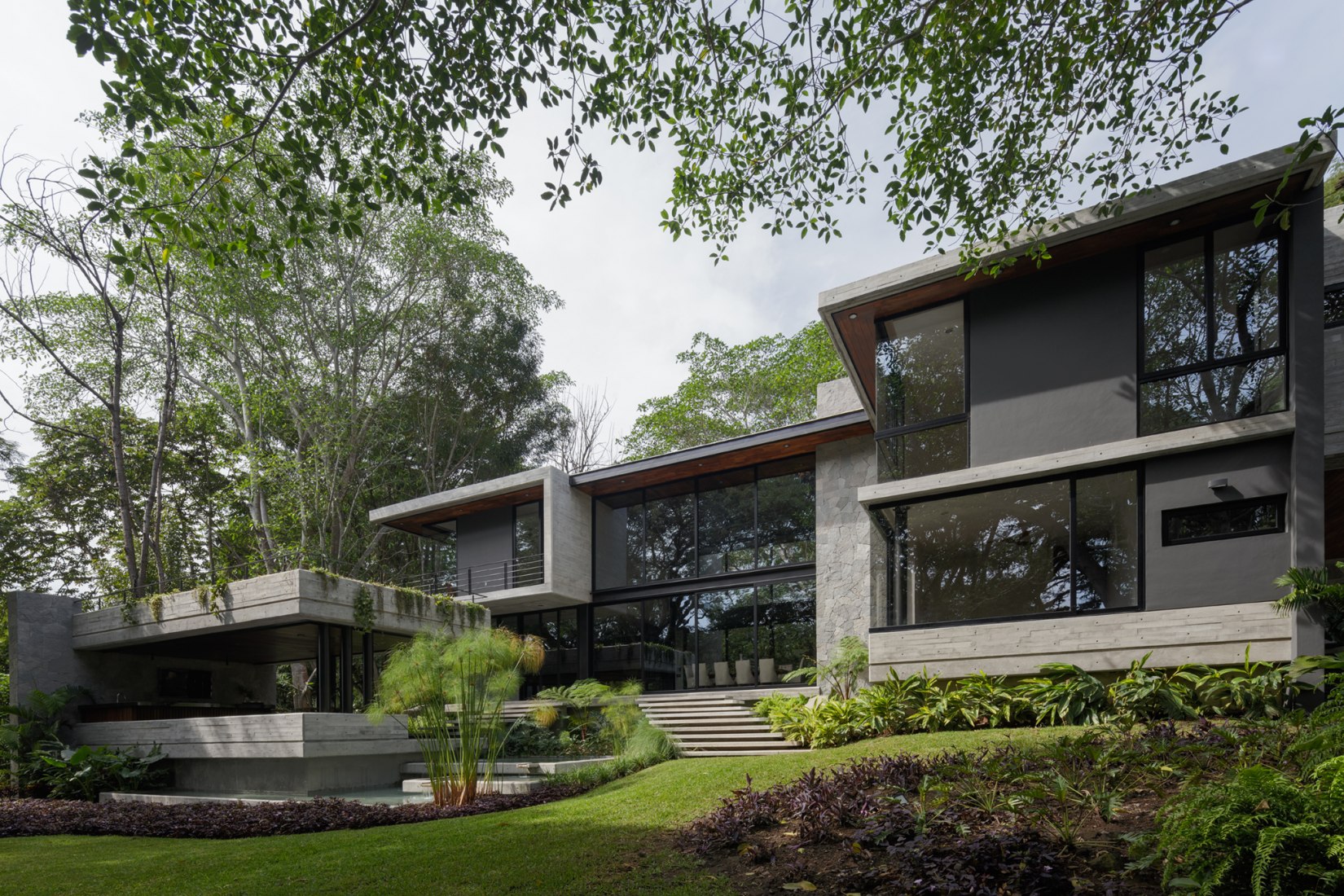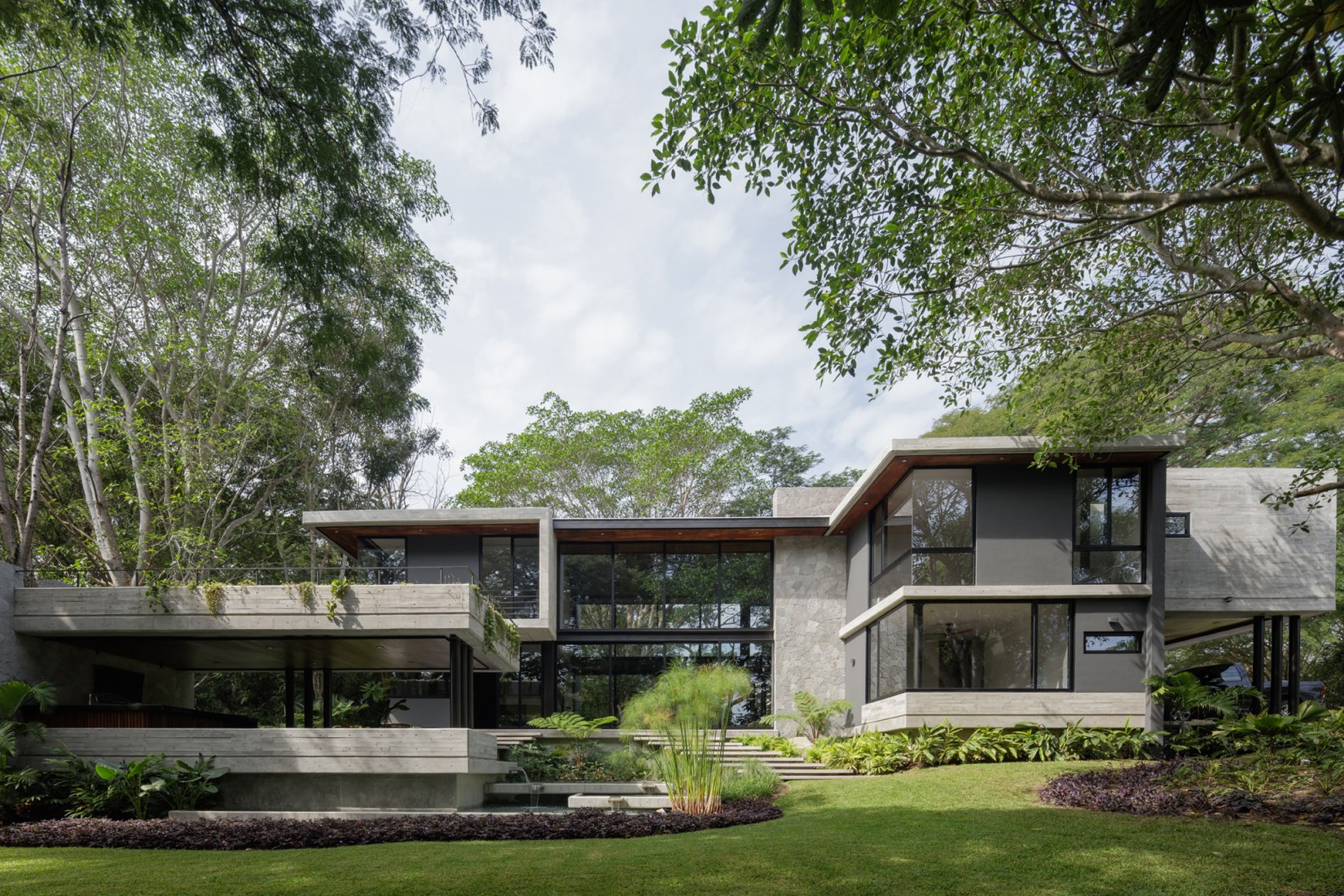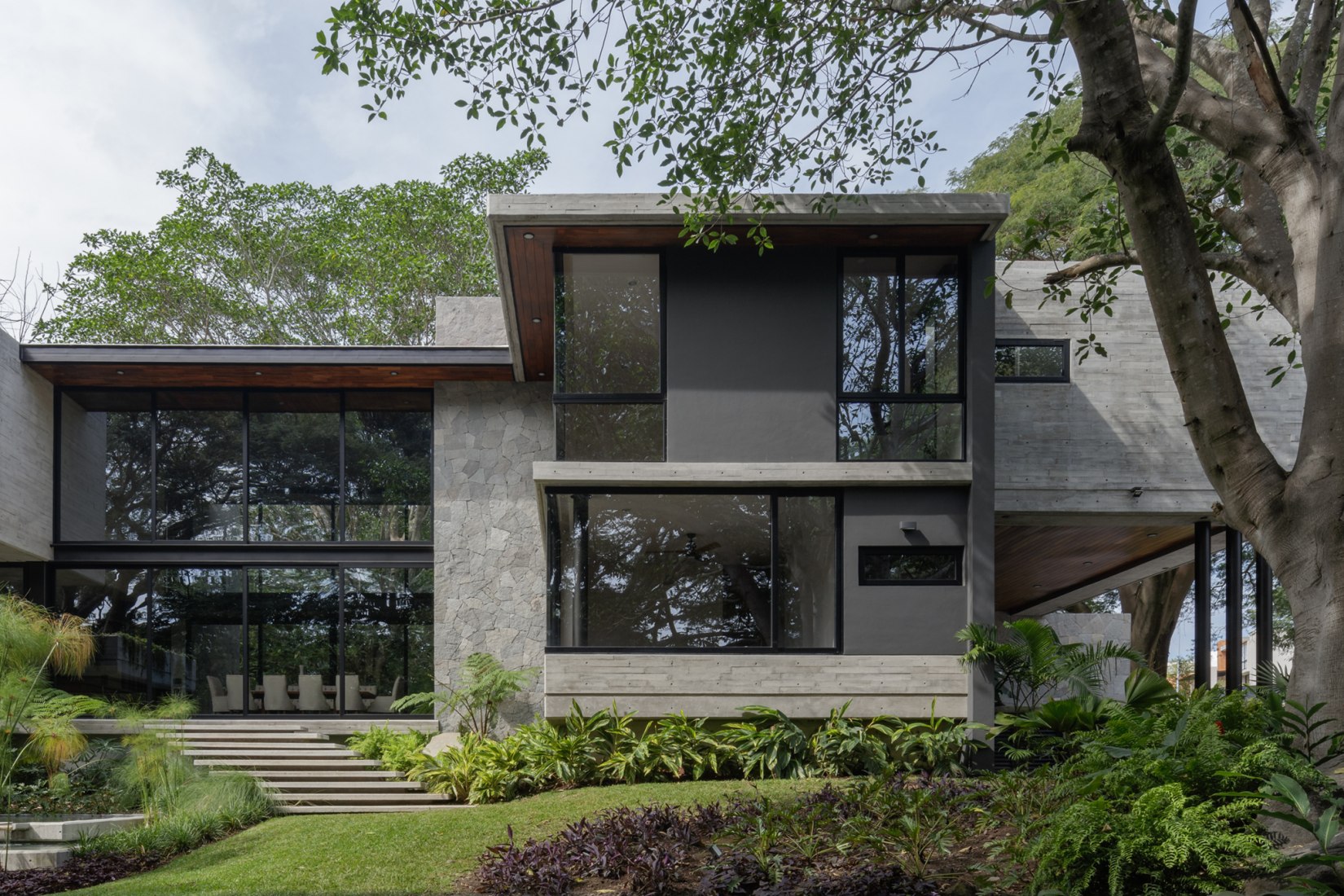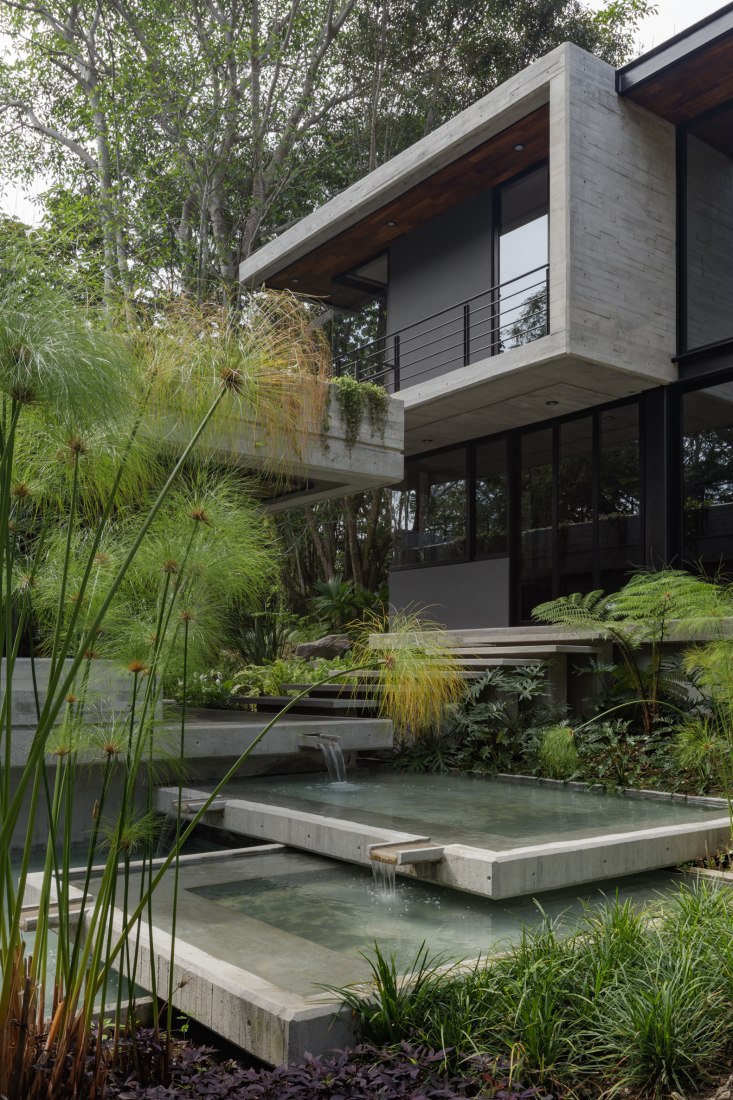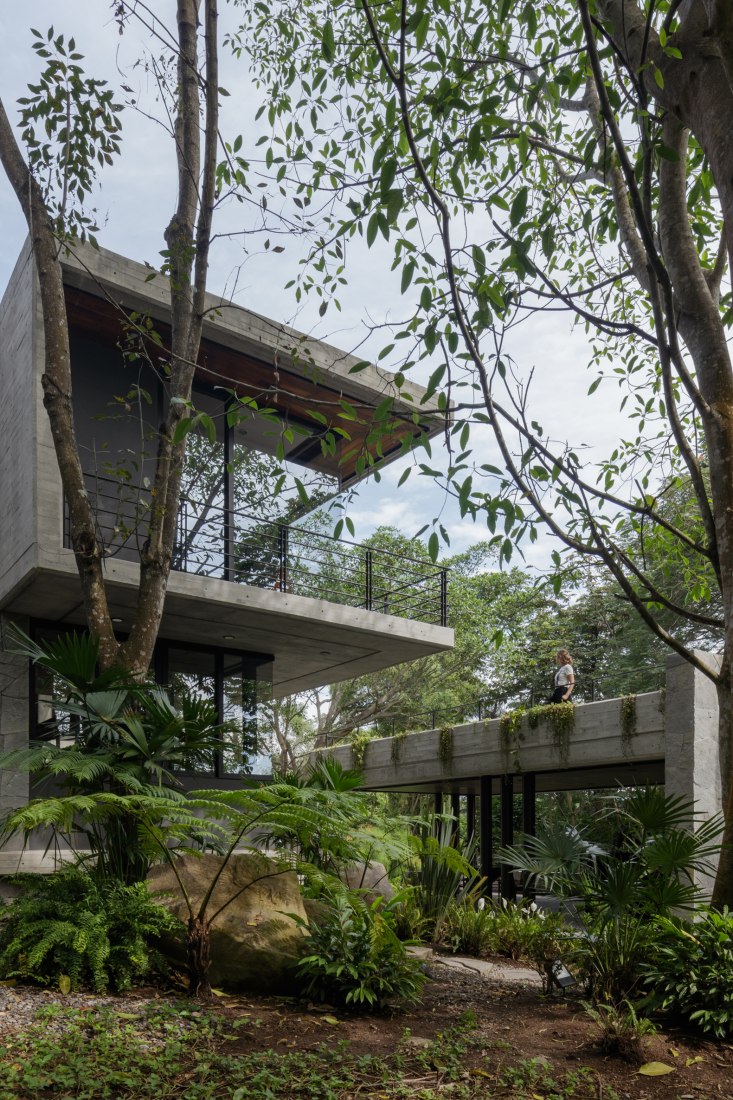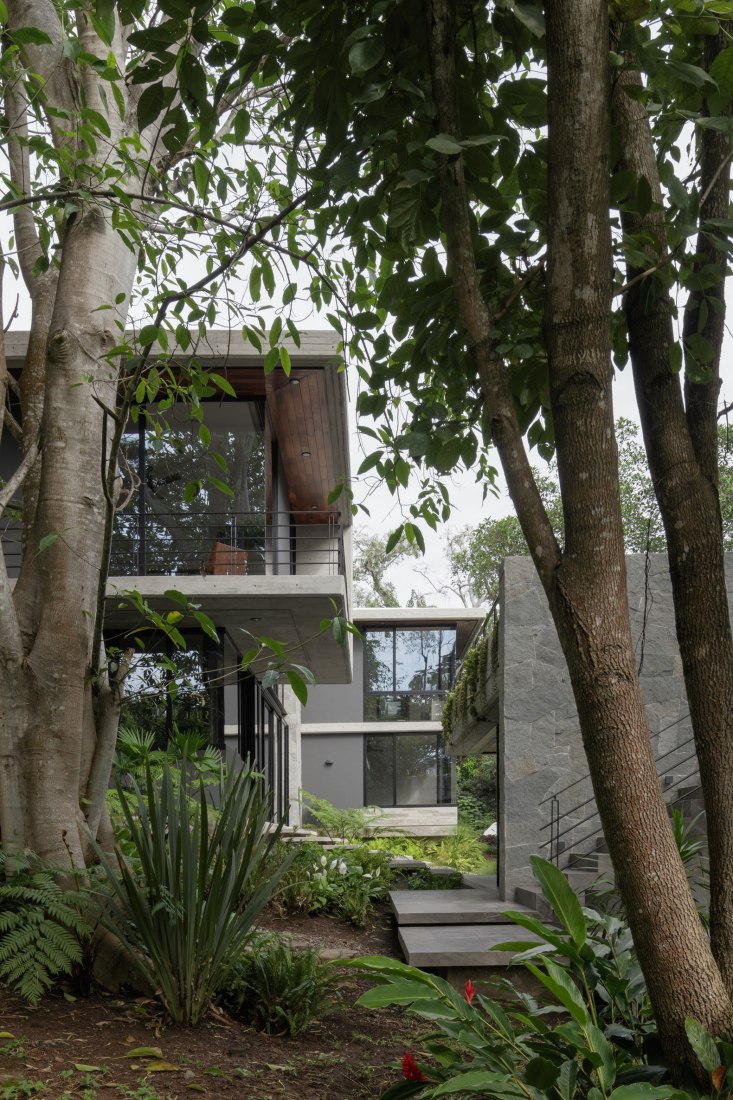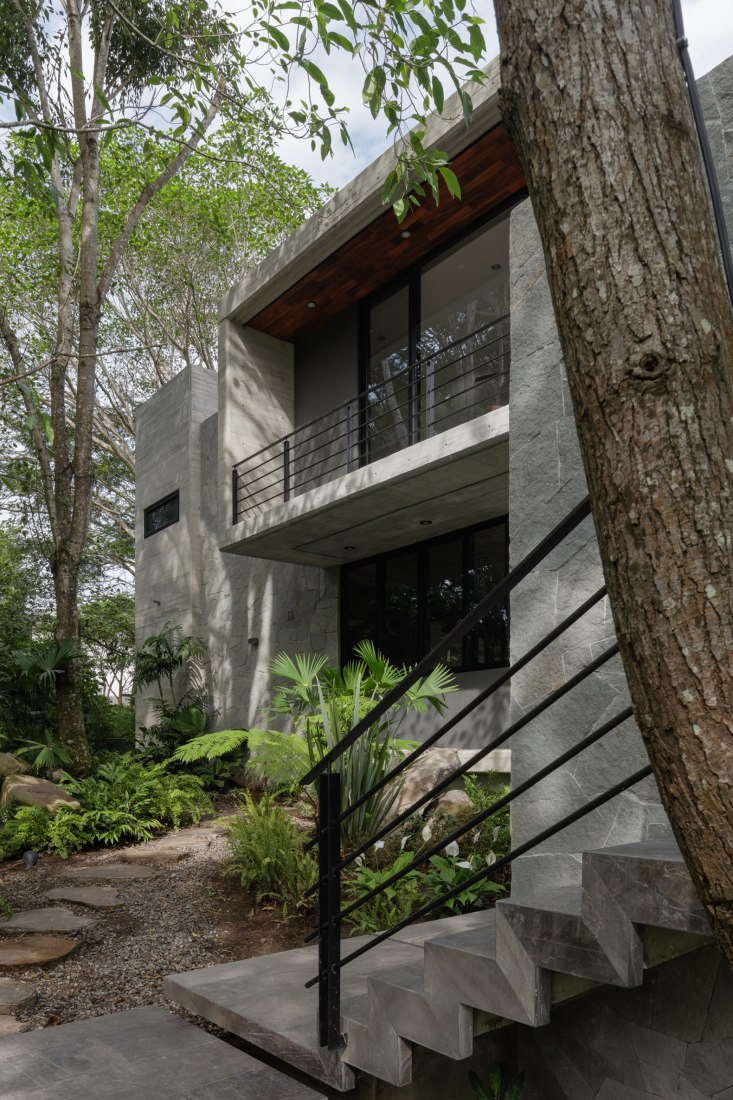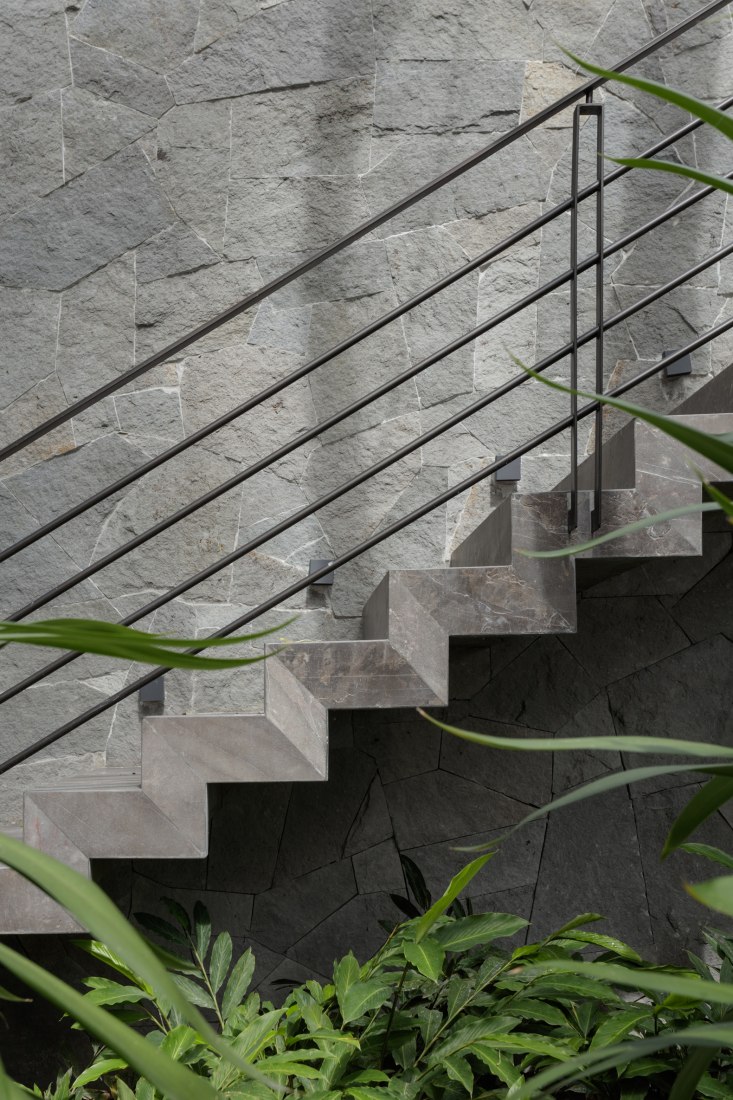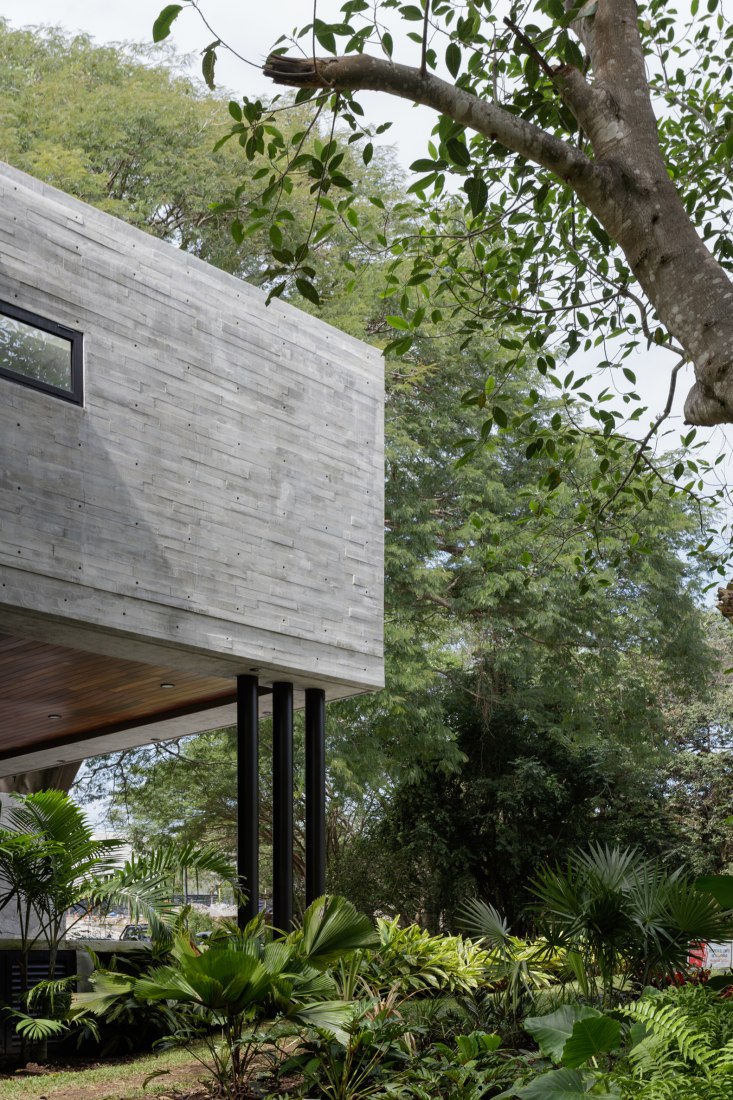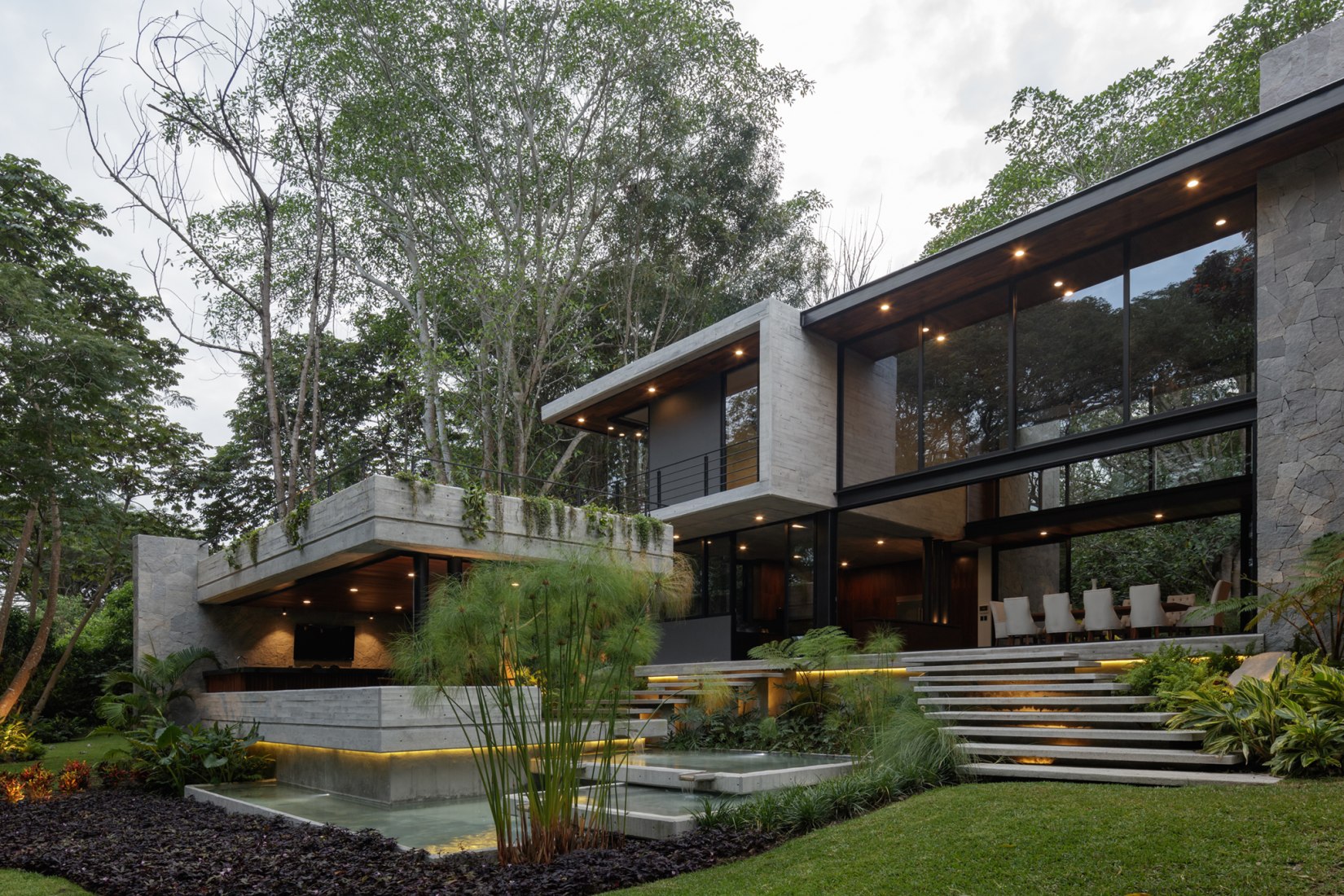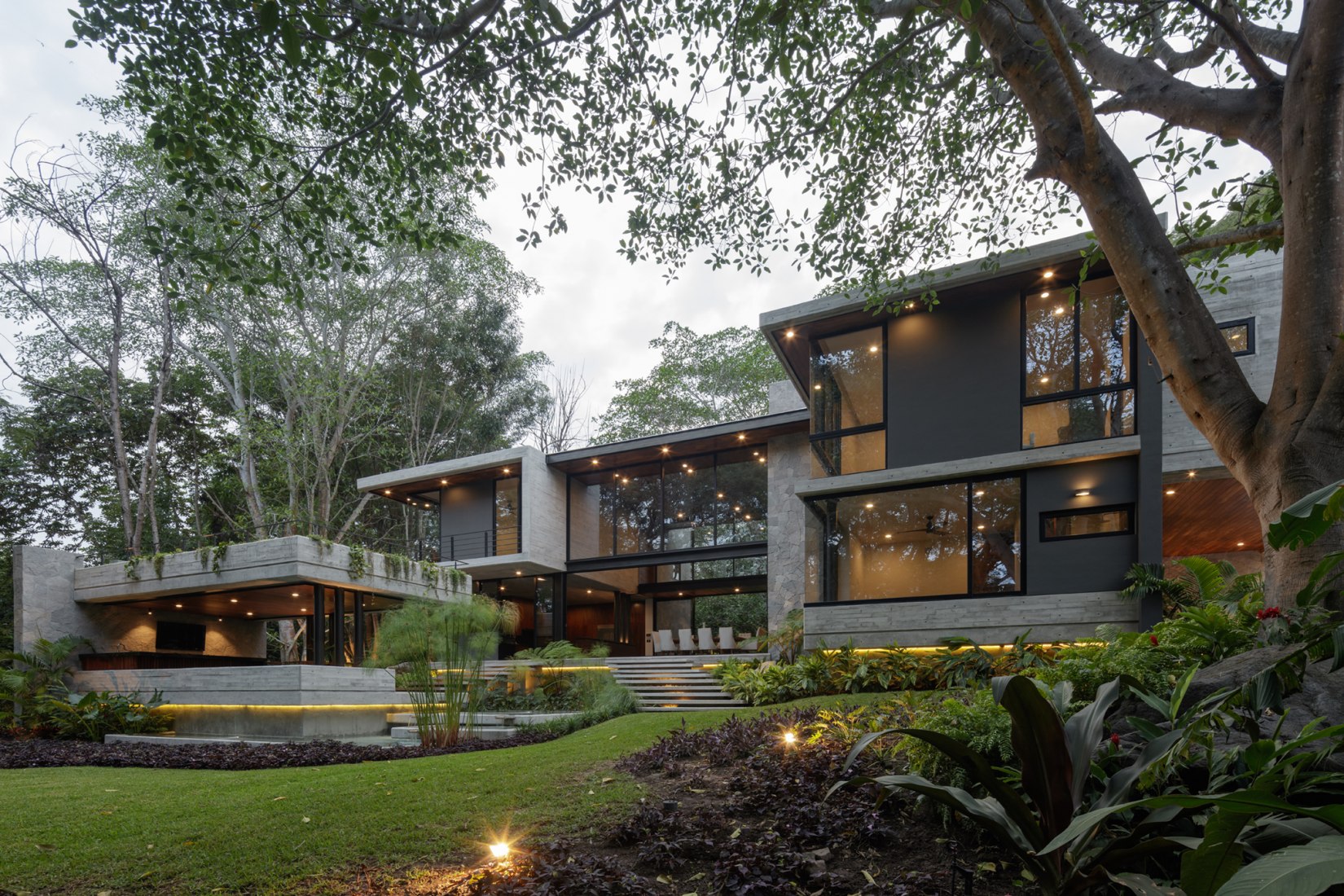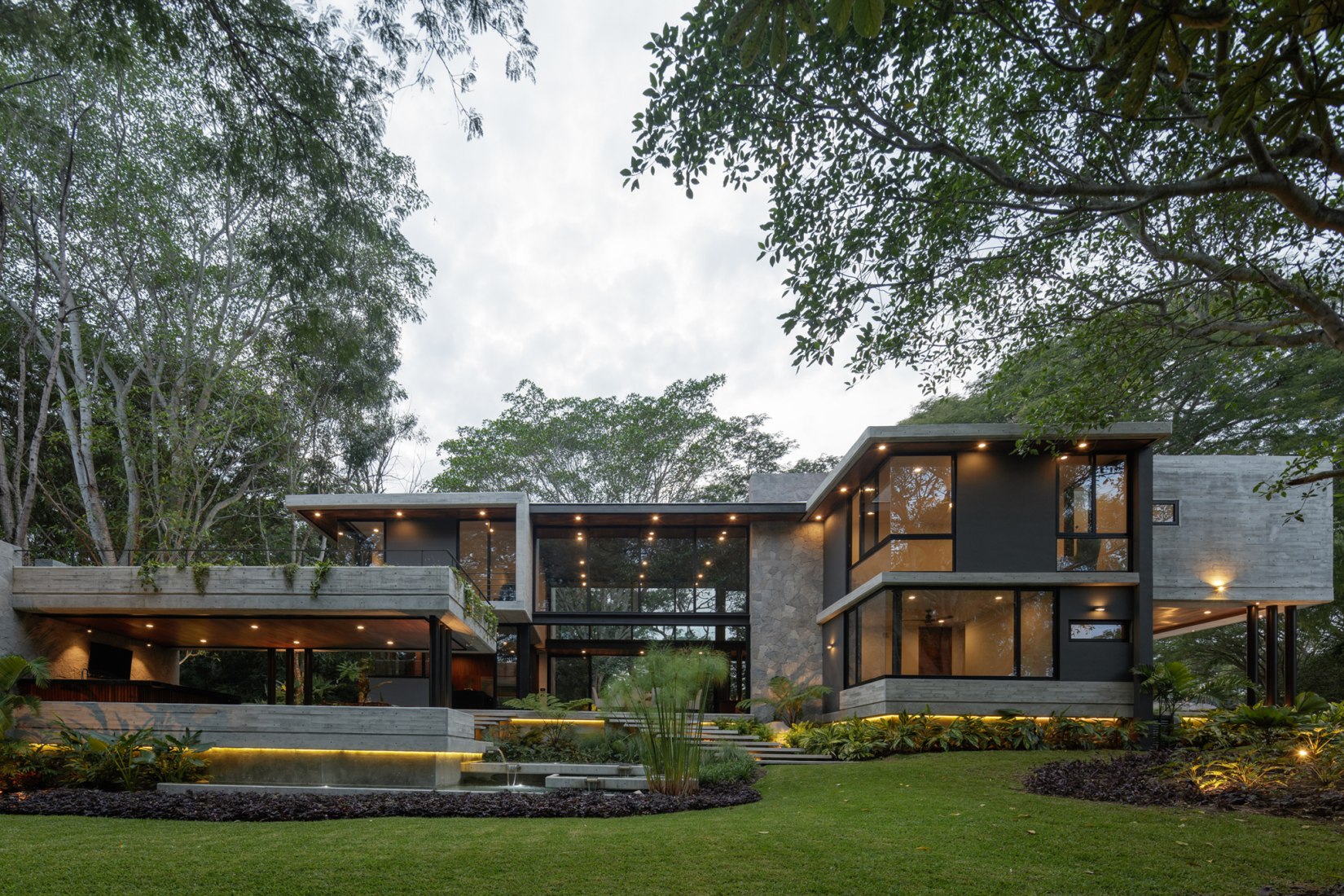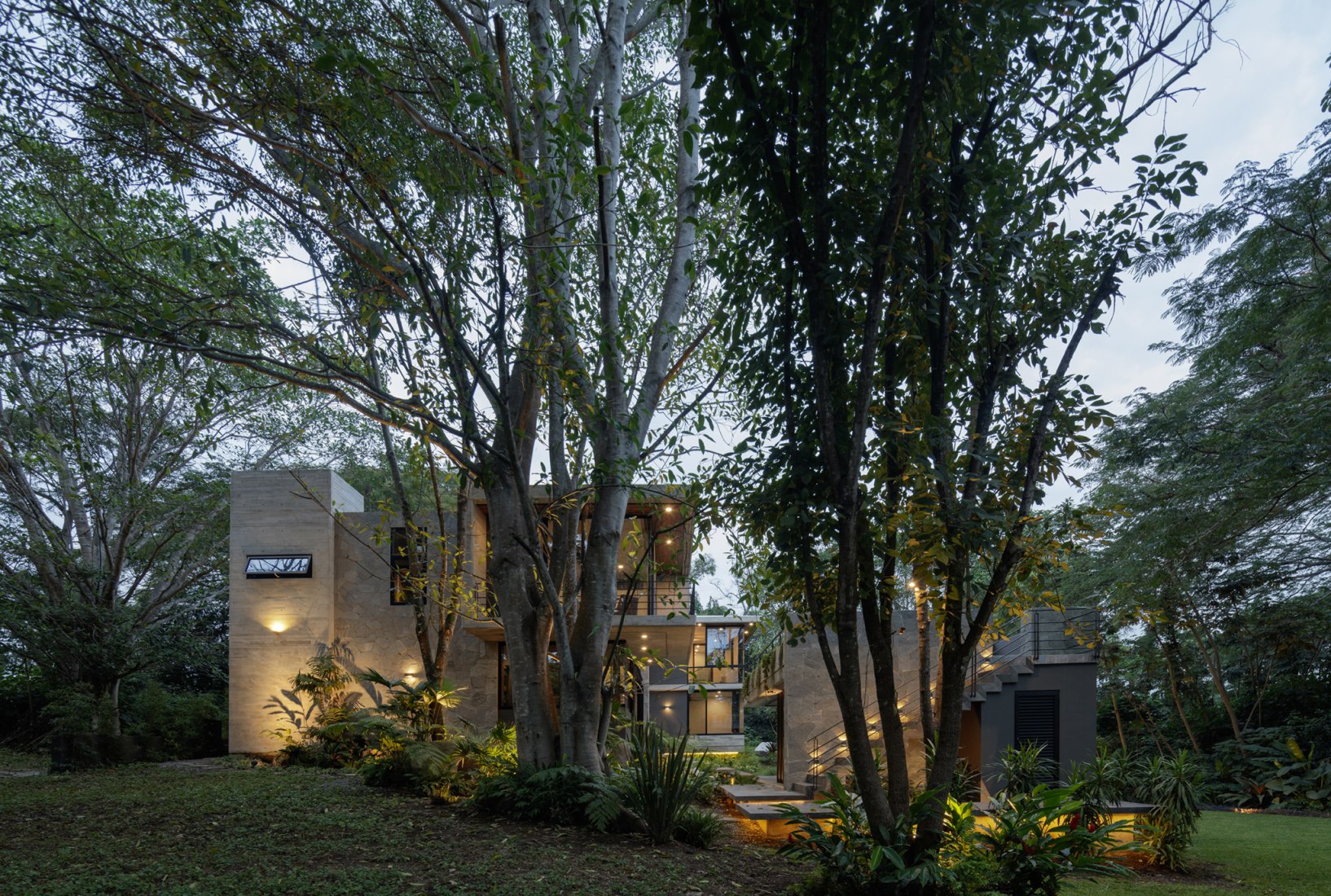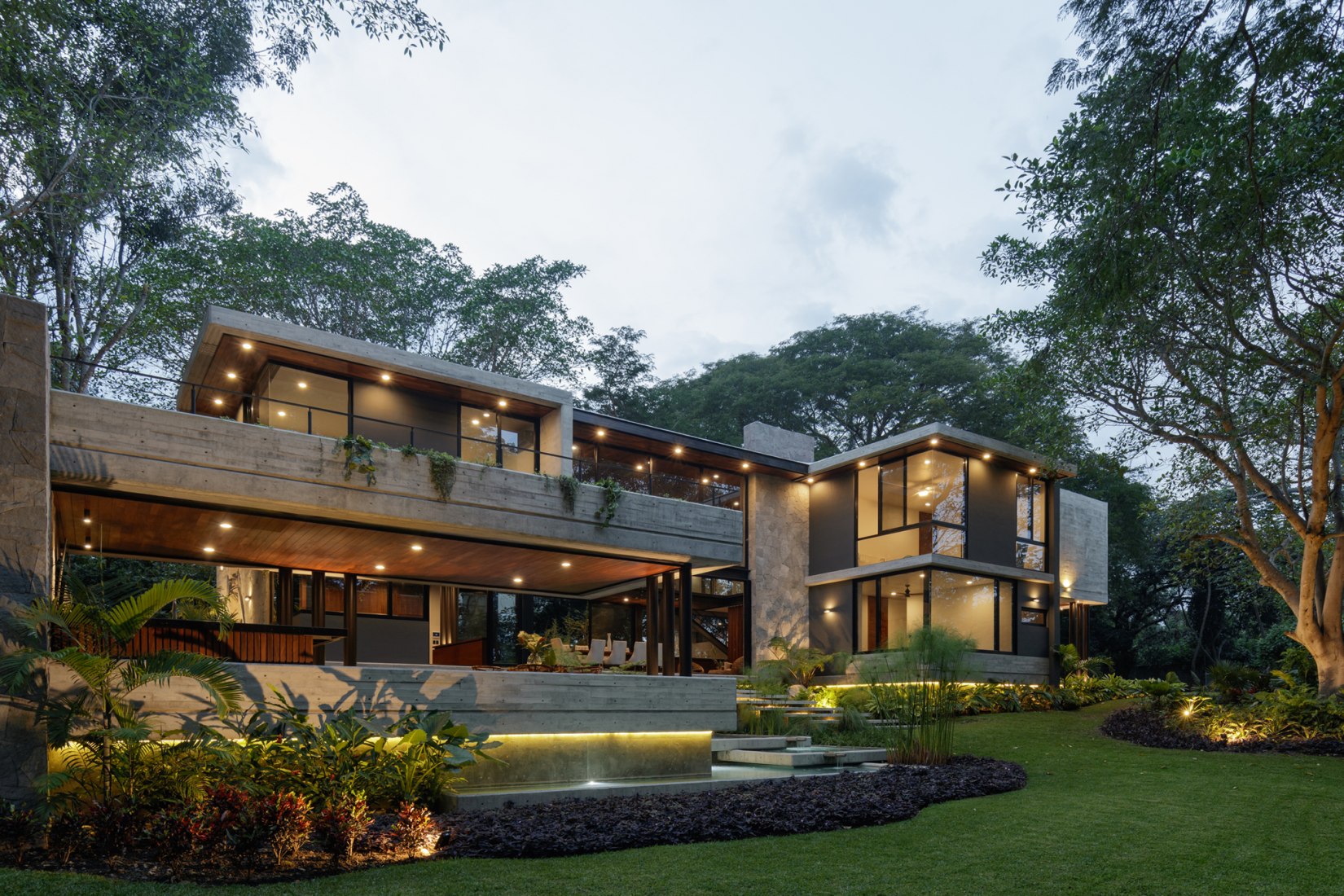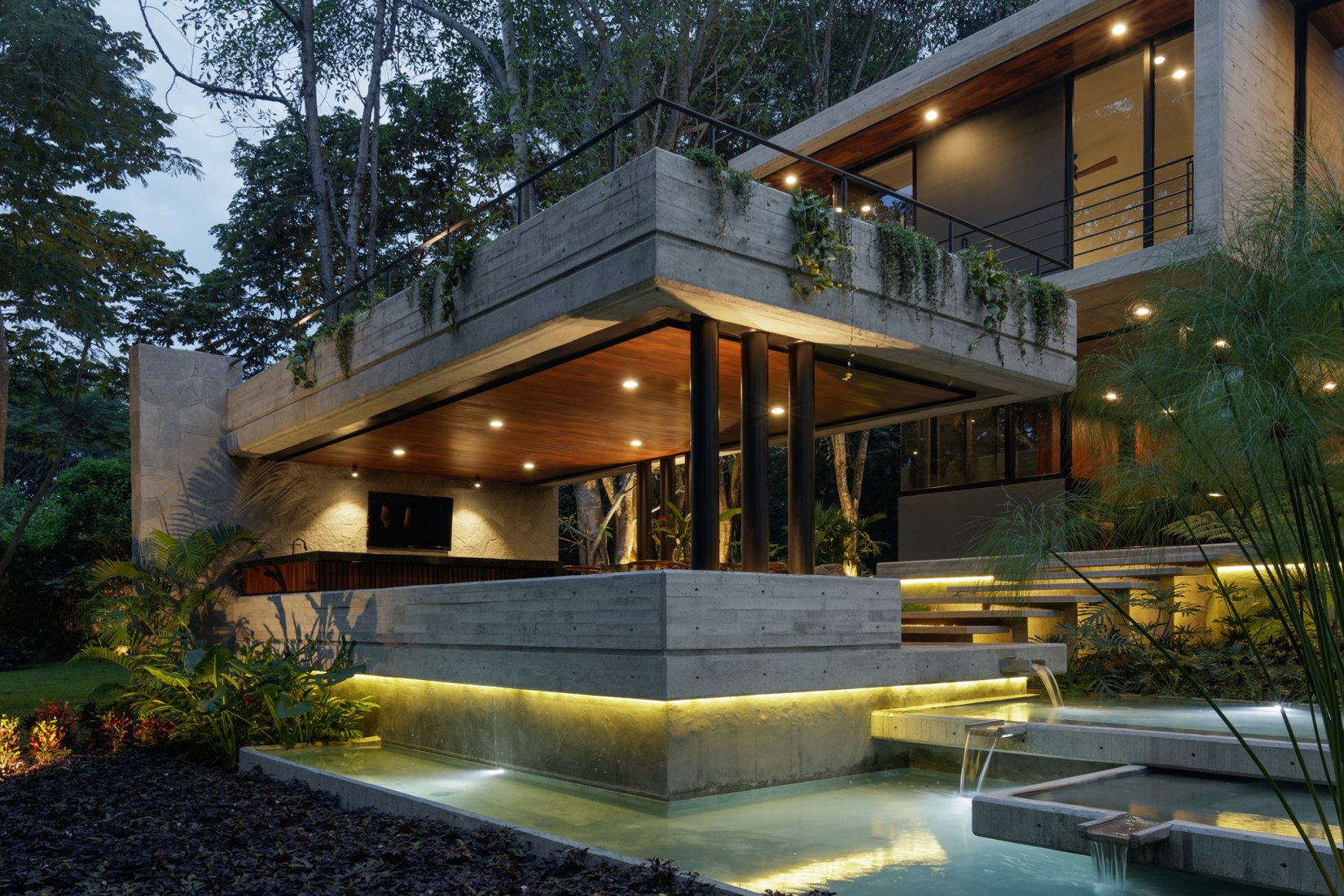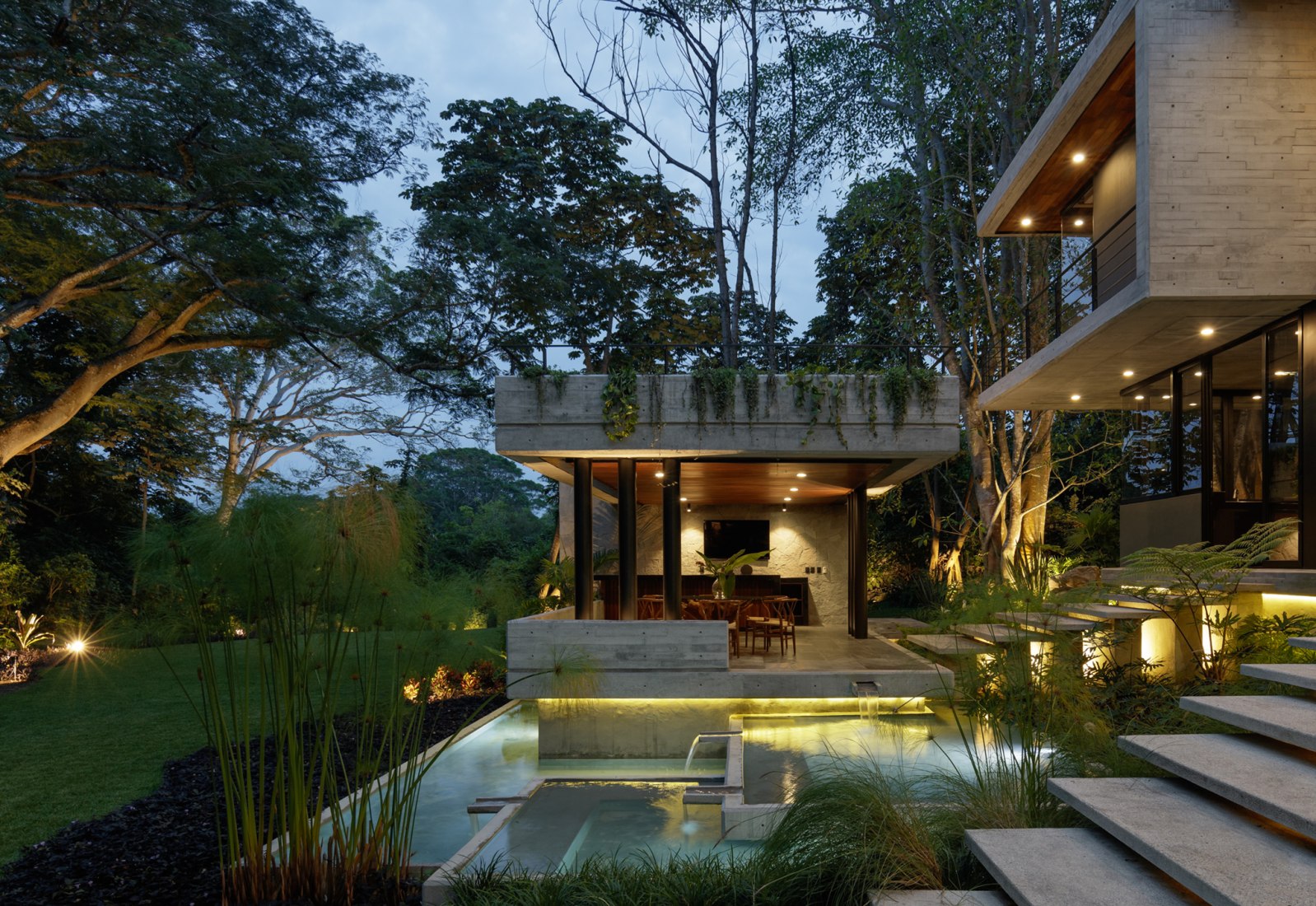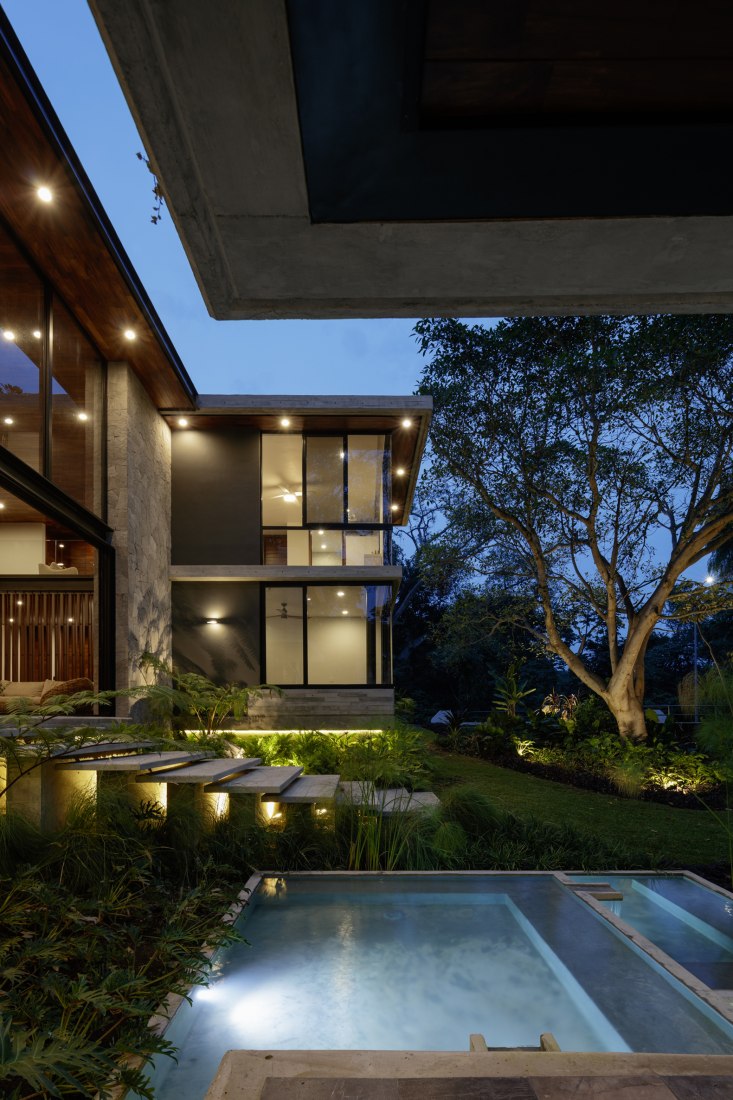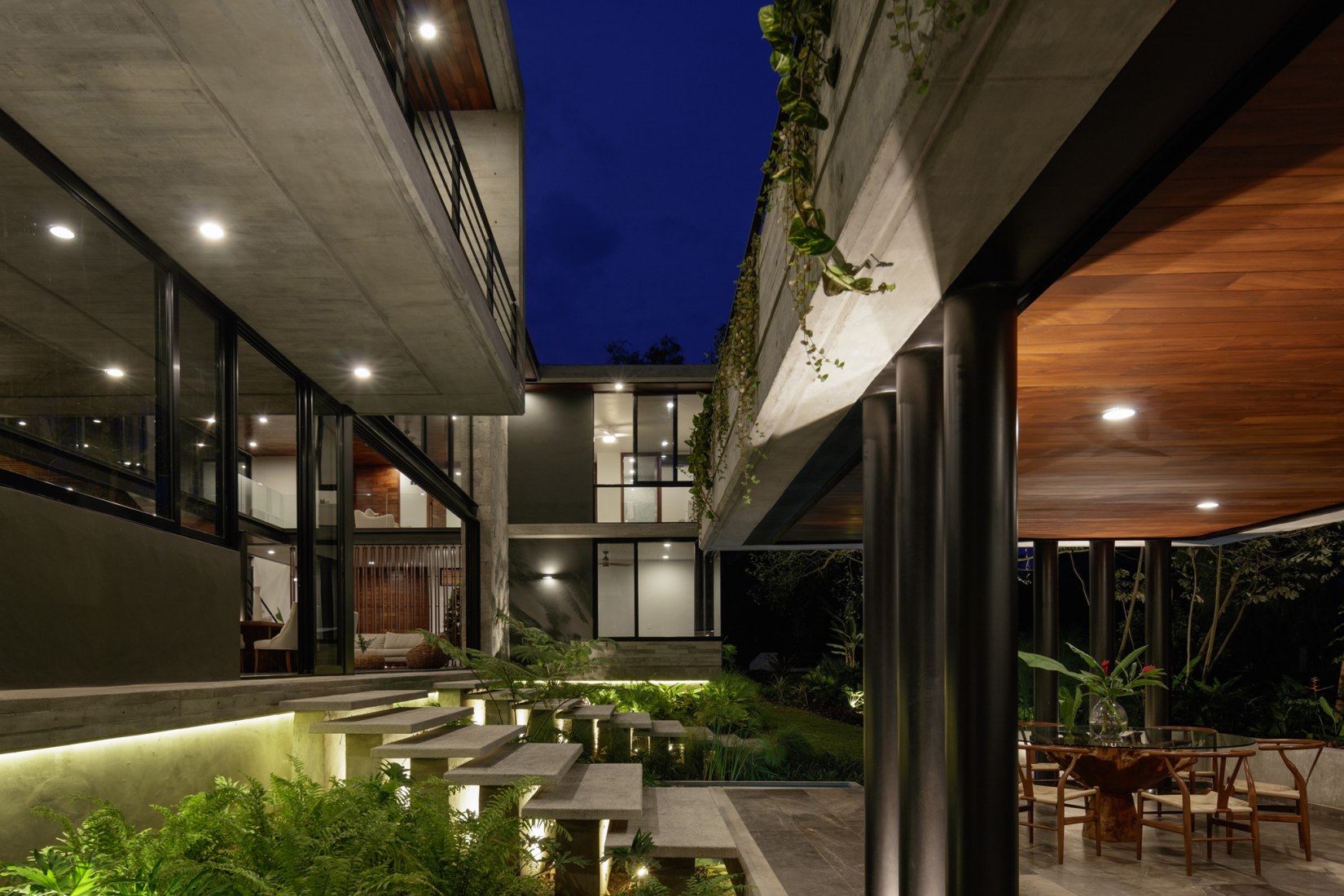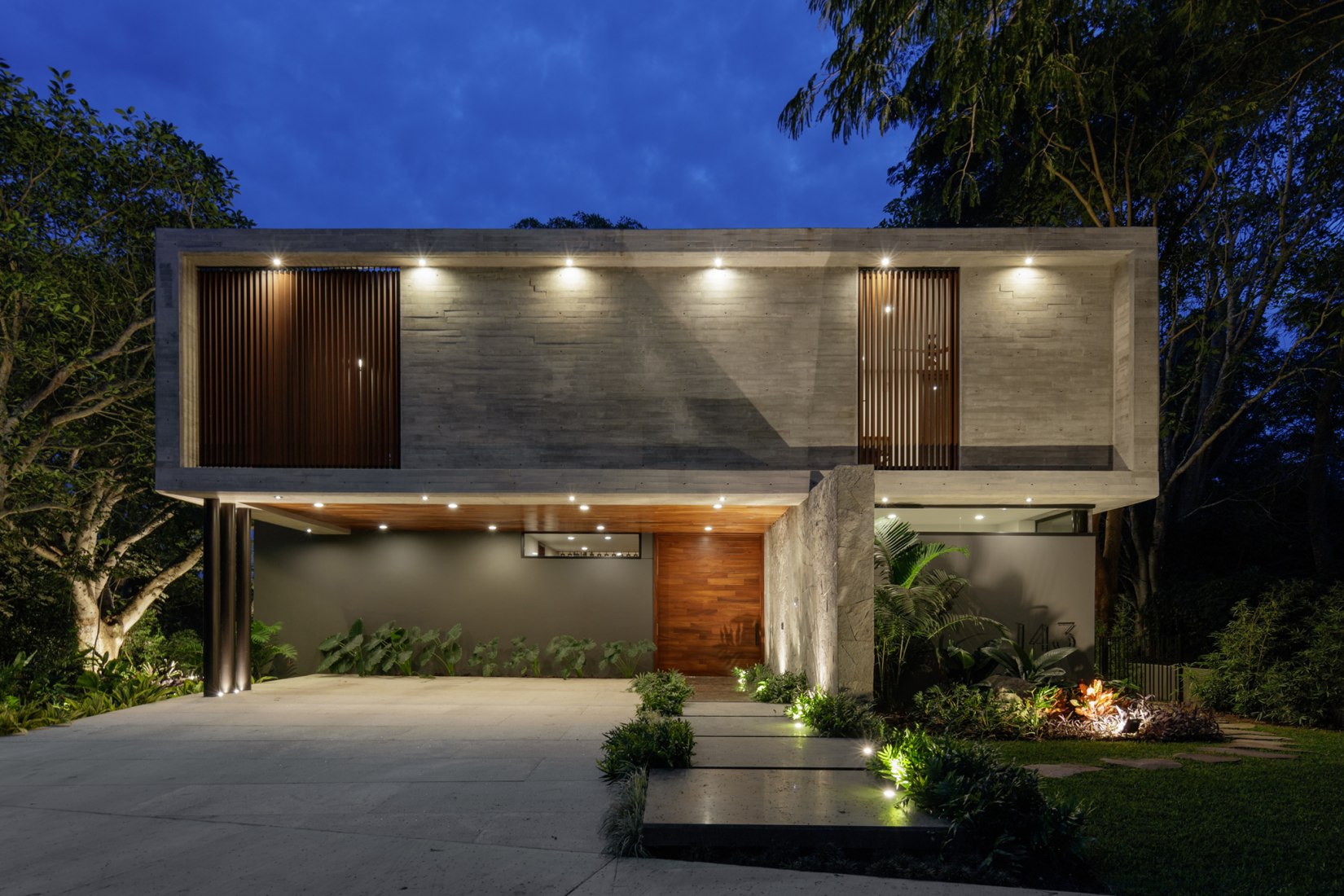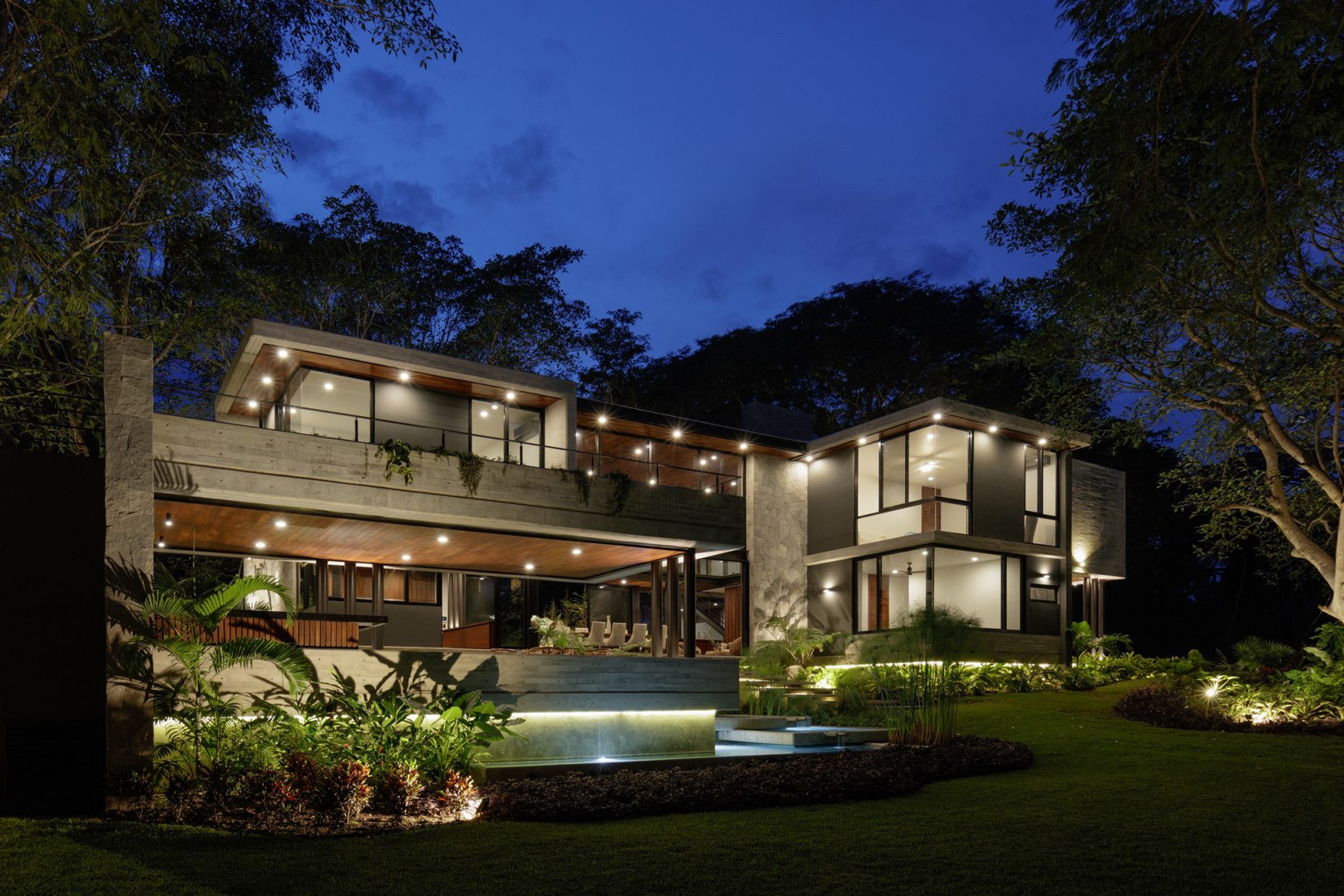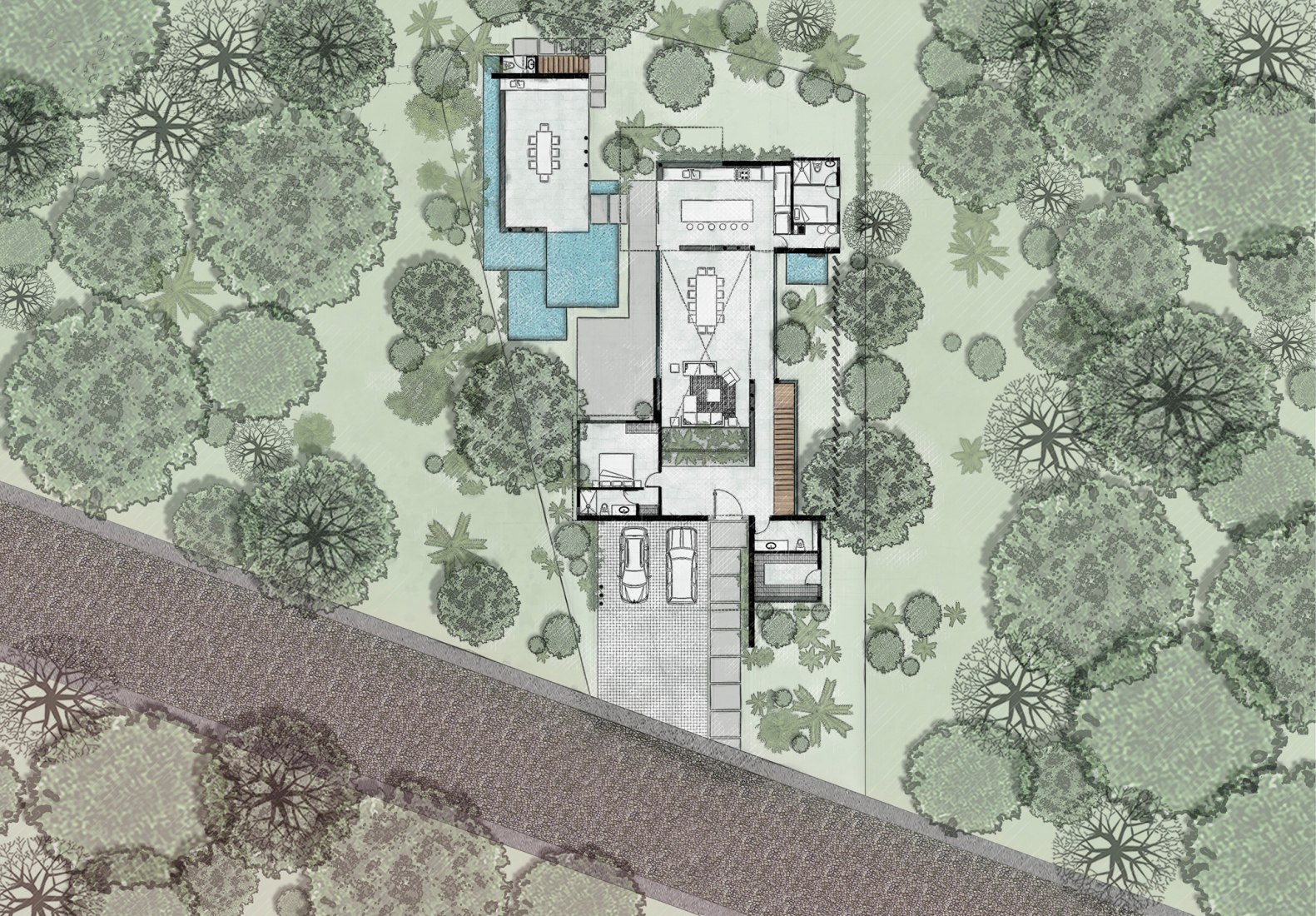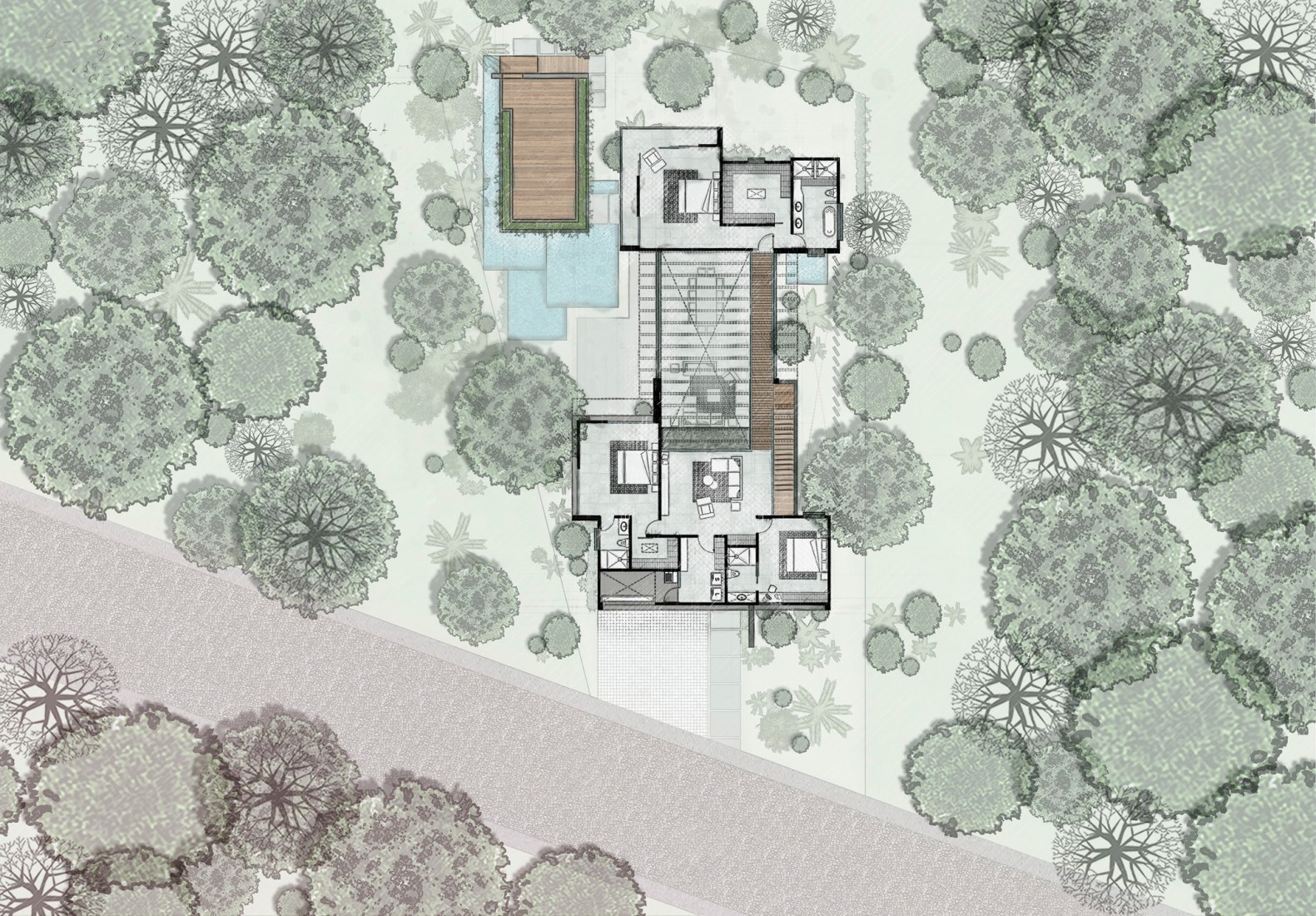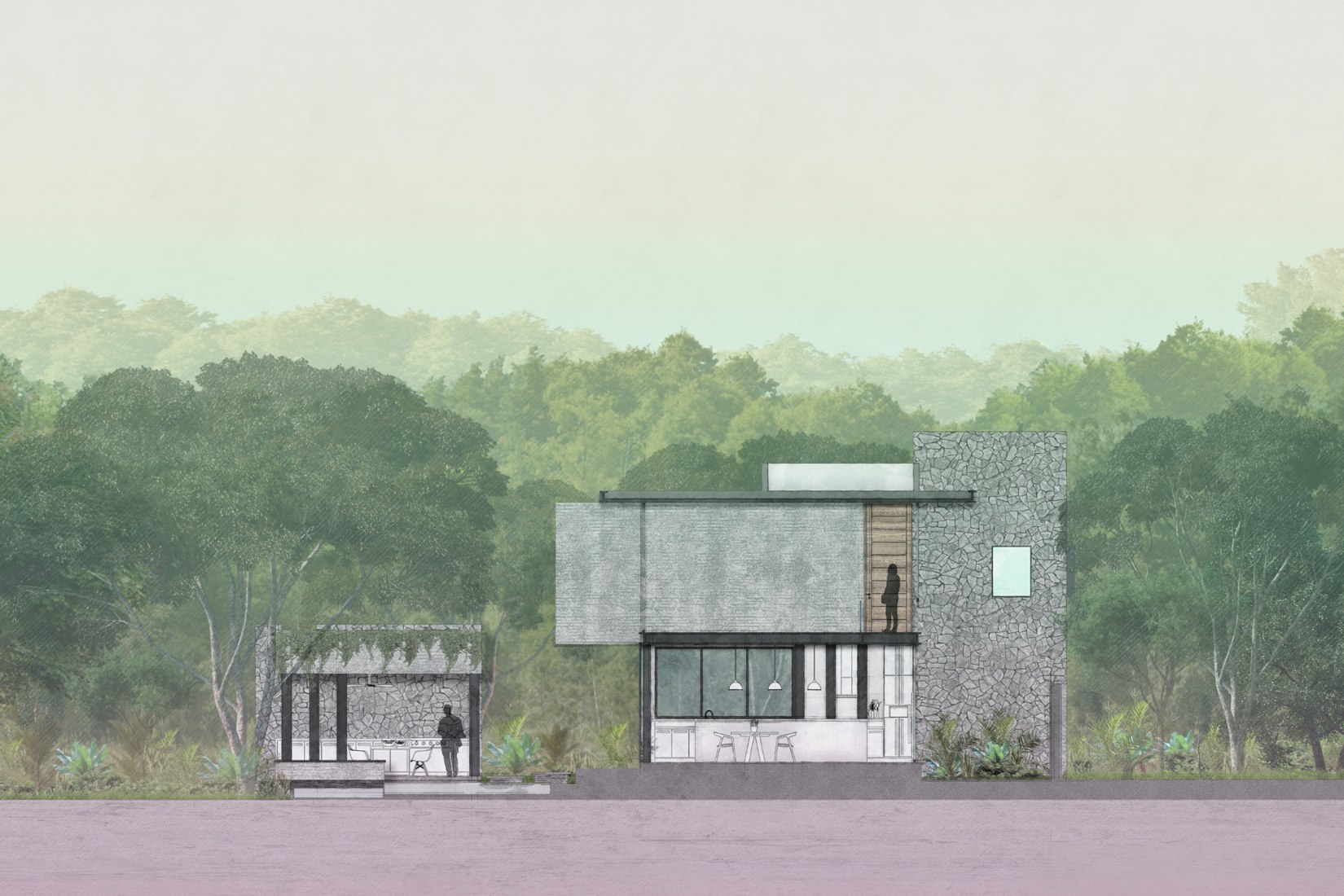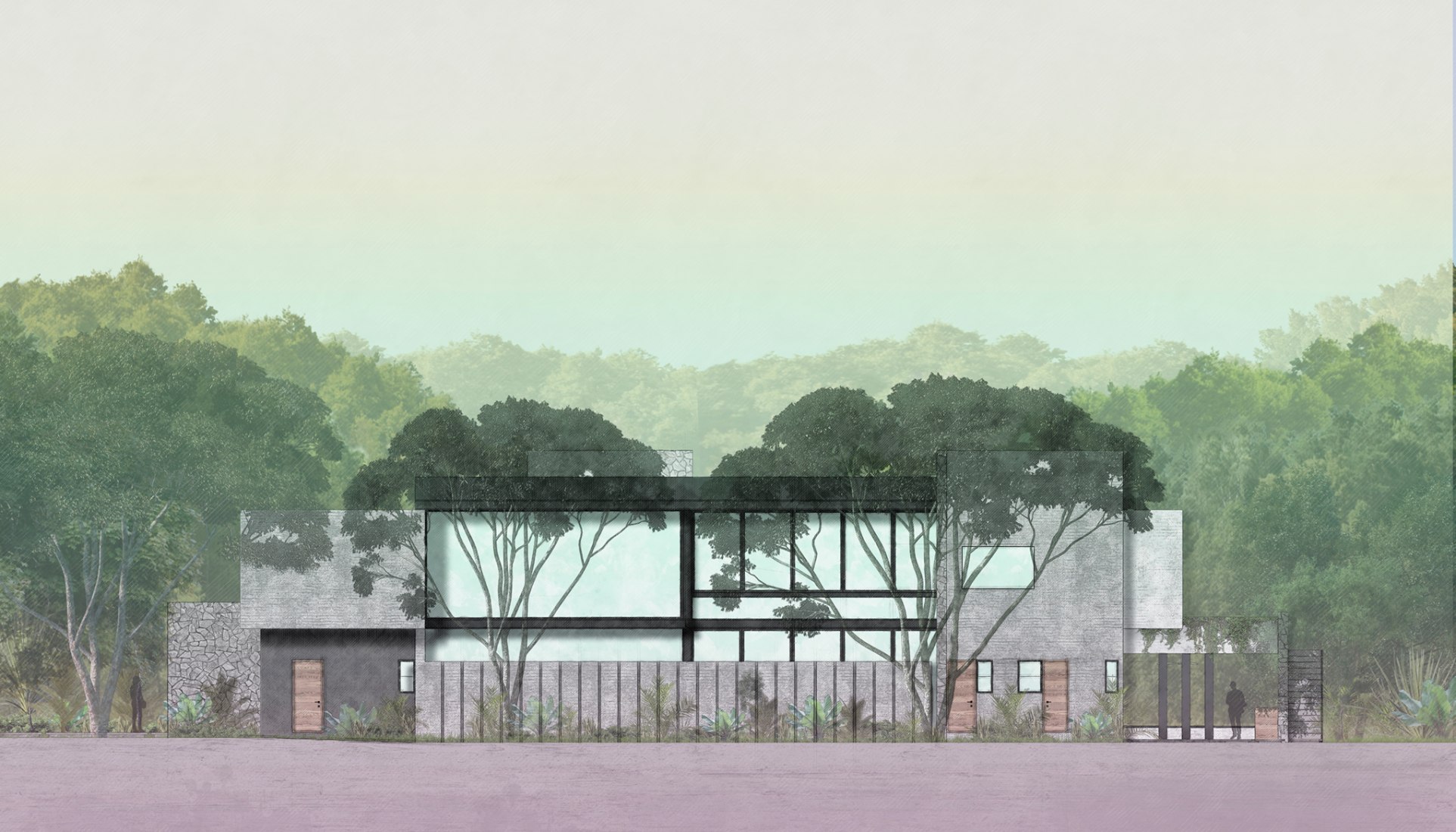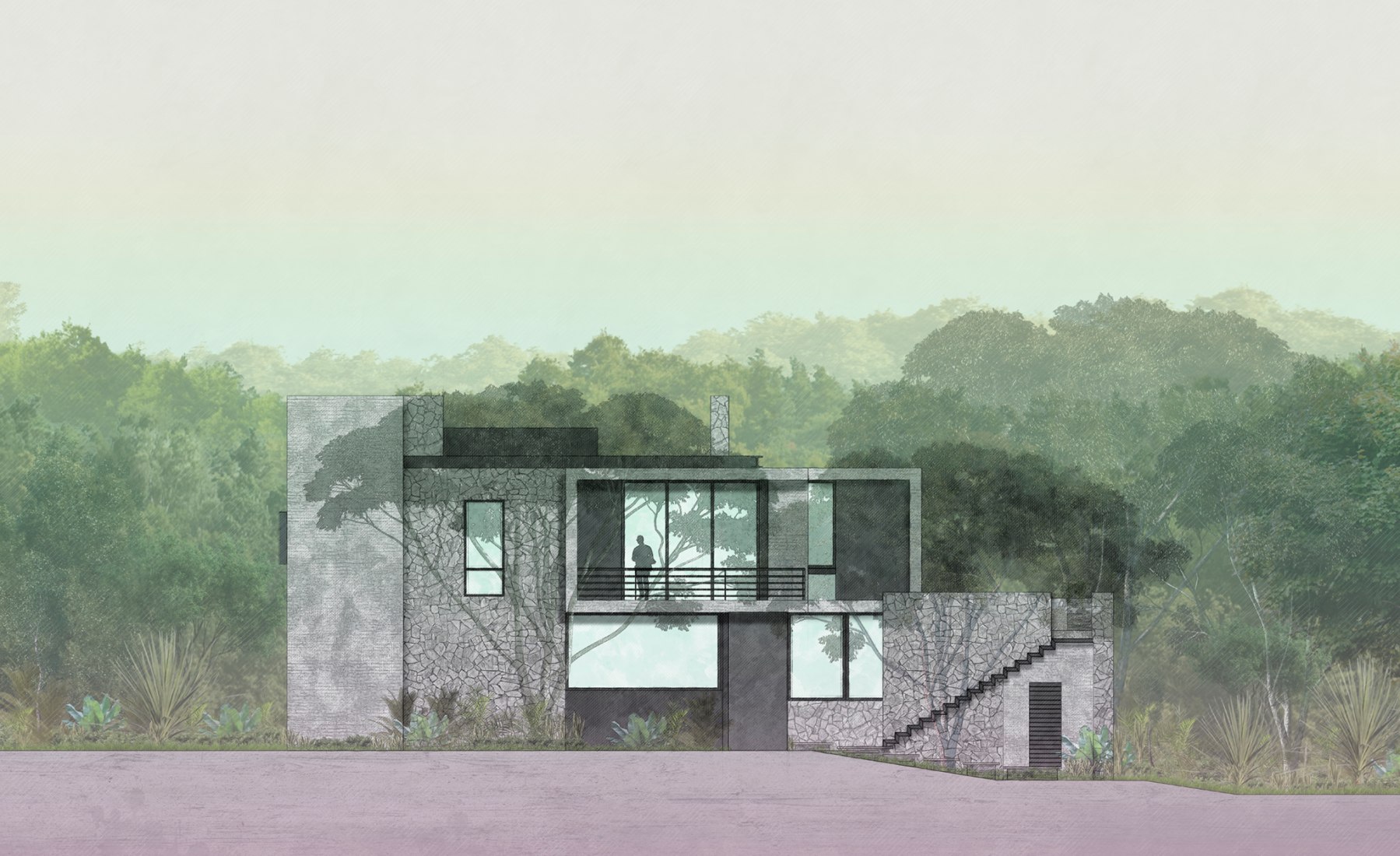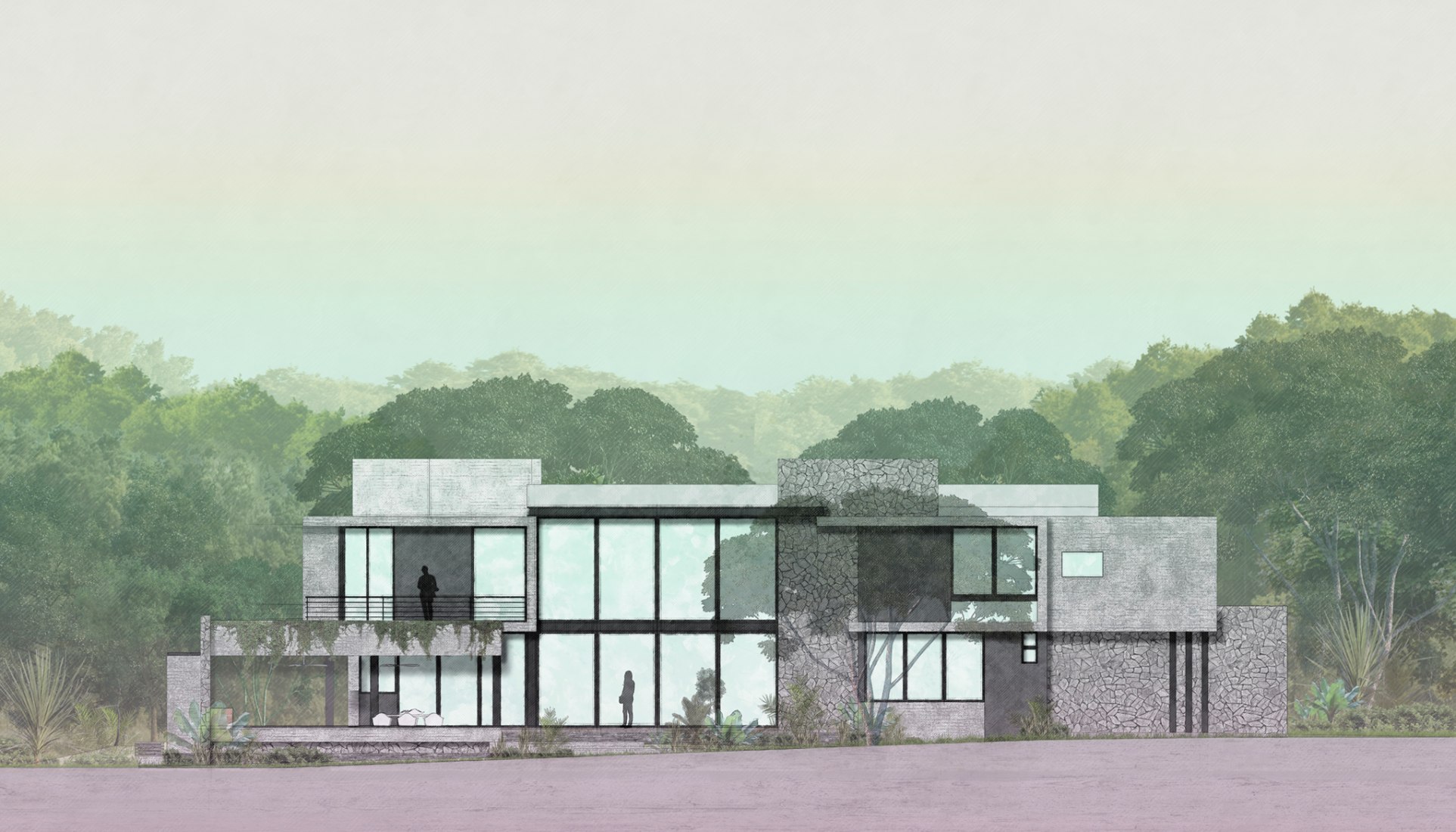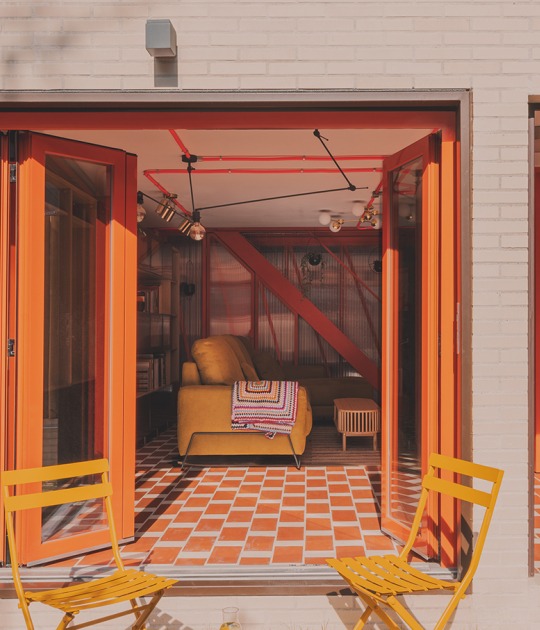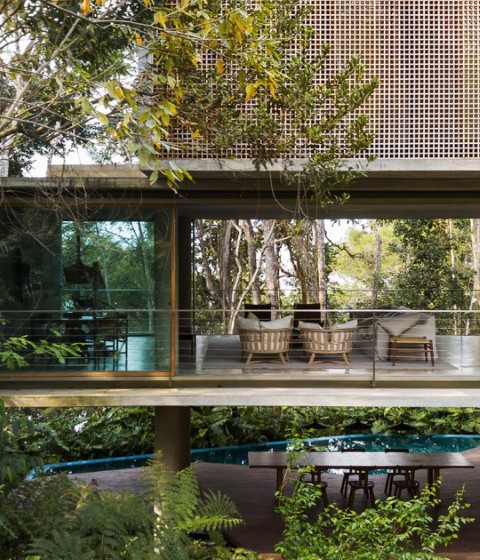The lower floor includes the living room and dining room which are fully open with a double height, which resembles a glass box that intersects the main axis and maximizes the entrance of natural lighting. The terrace separates itself from the rest of the program and connects with the garden through interspersed bodies of water and also accommodates a viewpoint that can be accessed via a staircase to enjoy the view of the horizon.
Description of project by Di Frenna Arquitectos
Entreparotas house is a project which allows its users to live in constant relation with nature, therefore the premise of choosing a site that would enhance the relevance of the existing flora and a small stream that passes through the terrain. Tropical vegetation, where the parotas and fig trees stand out, generates a jungle atmosphere that made the design concept possible.
Imposing concrete volumes that understood the site’s topography, were placed in a studied way, generating a series of paths to wander around the house. The created routes, always grant the vegetation to pop out and allow the user to discover the residence.
Selected materials play with a range of neutral and stone-like colours which interpret the essence of a lost ruin in the middle of the jungle, where architecture takes a step back to praise what happens on the outside and also dignifies and favours its components to acquire a perceptible richness as it ages along with the environment.
Light, wind and rain are elements that surround continuously the building, the perforation of big volumes with windows from floor to ceiling allows the crossing of small gardens which constantly embrace the house.
Downstairs the project harbours the heart of the residence; both living and dining rooms are opened completely with a double-height ceiling, which resembles a crystal box that intersects the main axis and blurs the boundaries between inside and outside, providing natural lighting to all the spaces, which are connected through stairs that once again bet for enjoyable passages, with the terrace.
This last one diverges from the rest of the program surrounded by alternated water bodies that reward closer contact with the garden and also accommodate a rooftop which you access through a light-structured stair to enjoy a moment of sightseeing.
The upper level hosts the most private zones. Walking through the stairs that are placed in the centre of the house, to continue with the idea of the importance of light and the direct connection with the context, you reach an elongated corridor whose perspective is extended with the double height of the ground floor which distributes to the bedrooms.
The proposed structure solved the possibility of large cantilevers and free wall spaces, that could be perceived as completely open toward the back facade. This is how a mixed structure of concrete and steel was chosen and achieved a perfect blend with artisan work in stone walls and parota woodwork.

